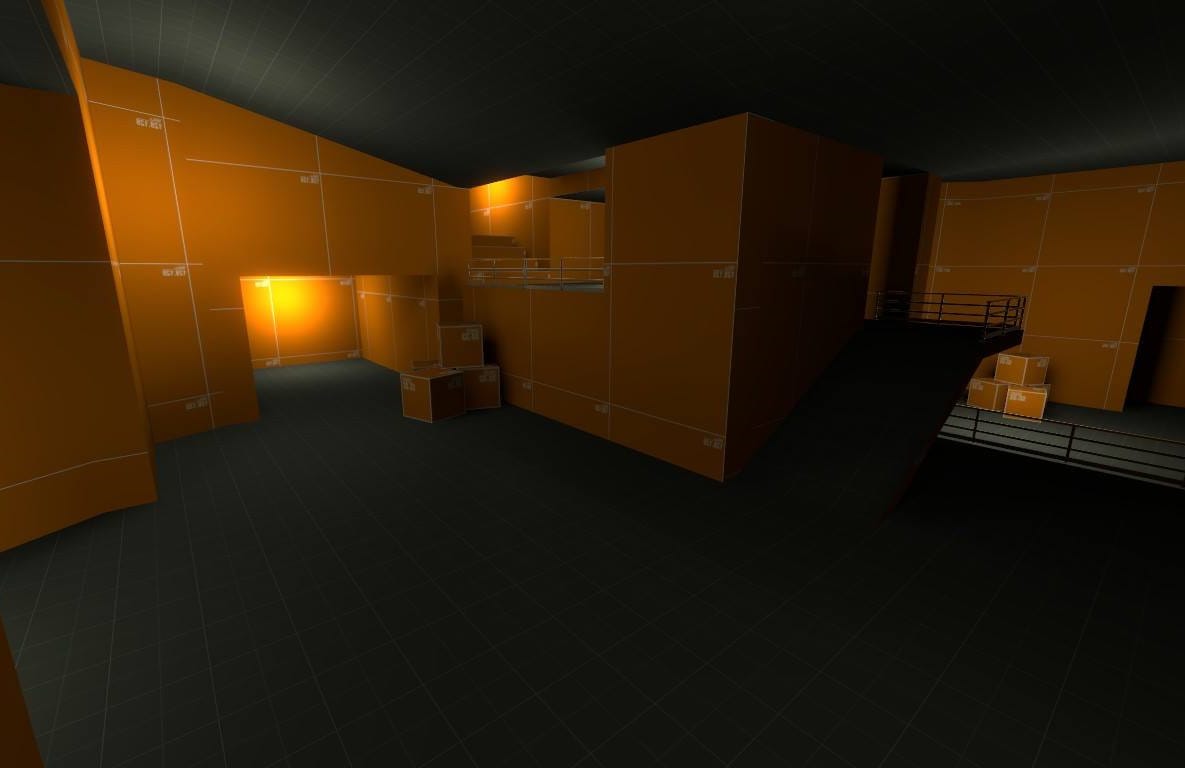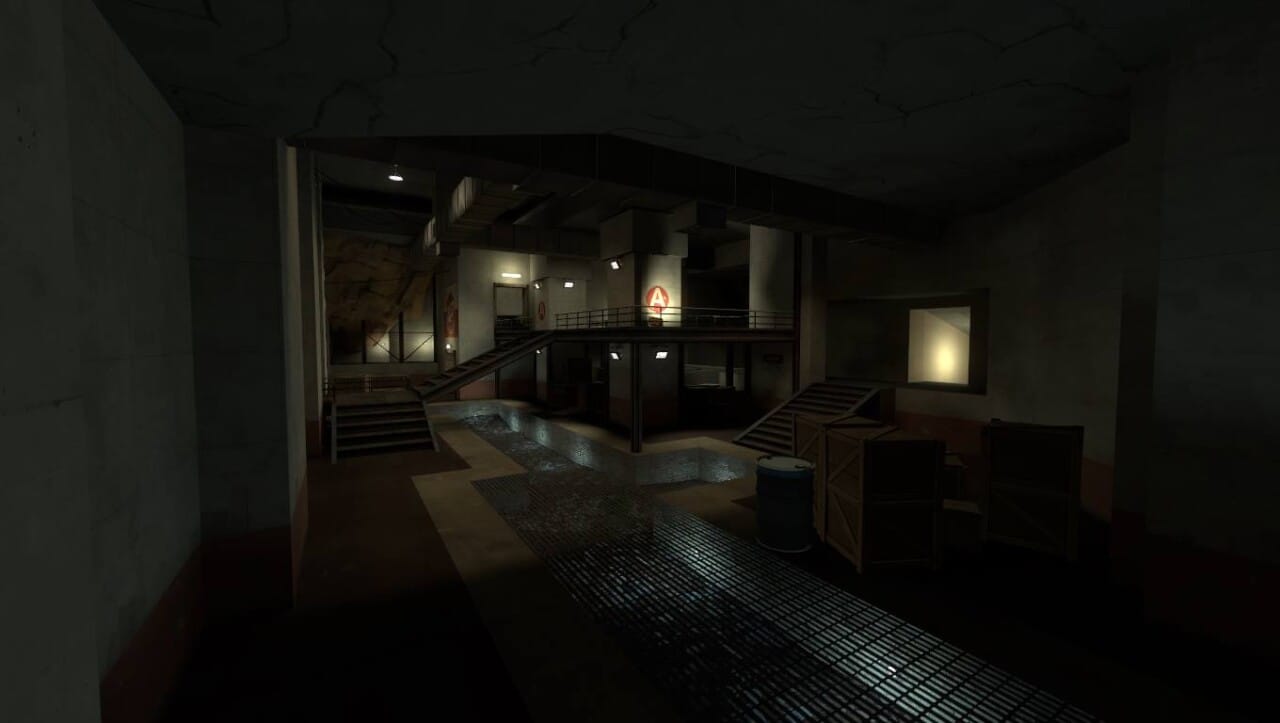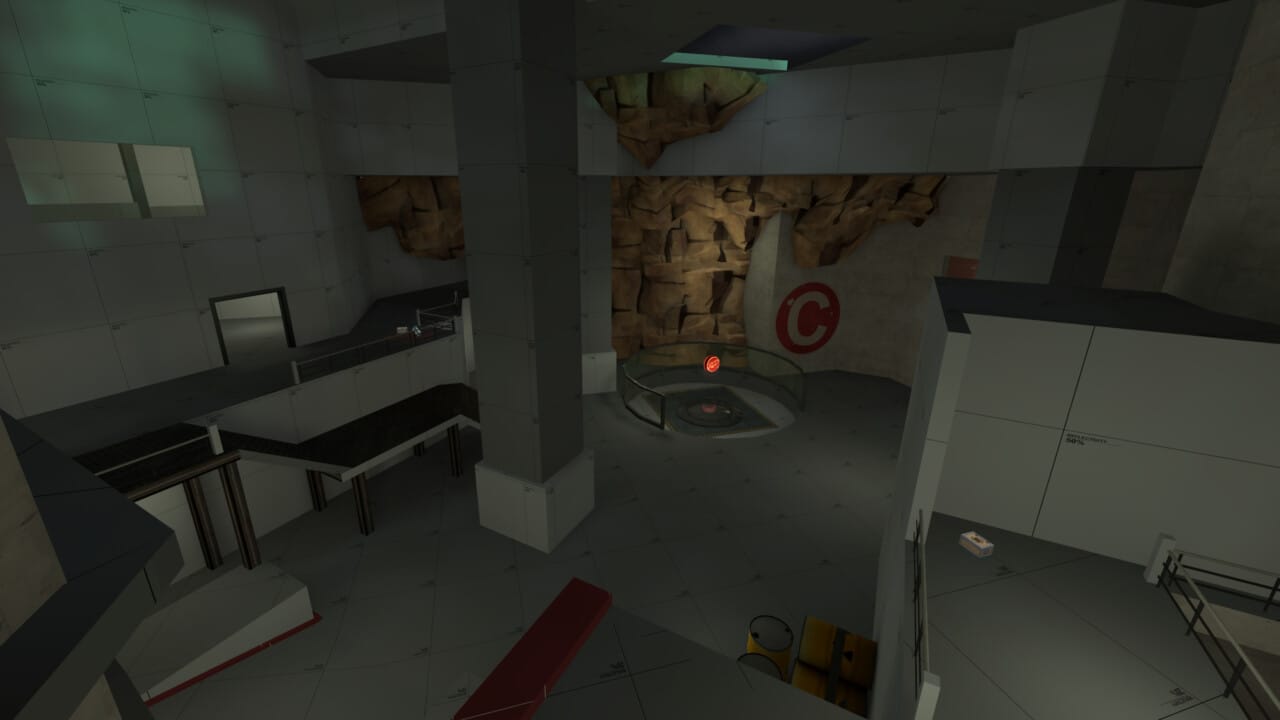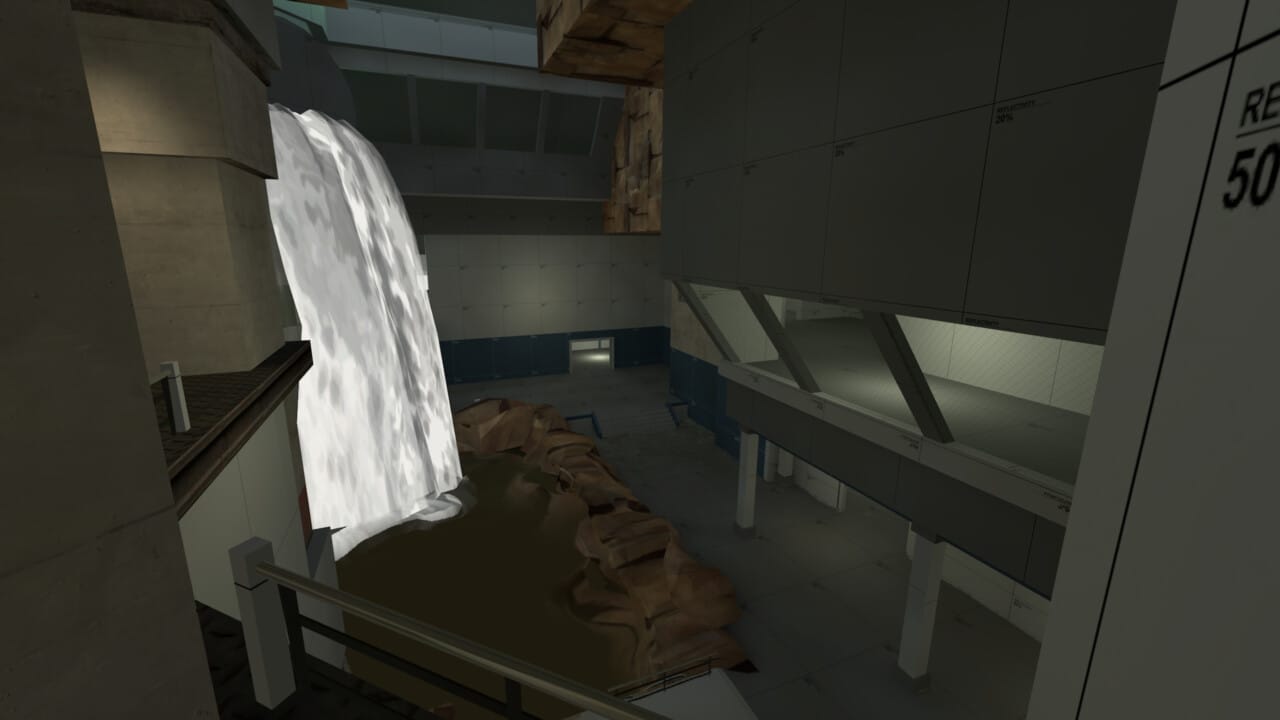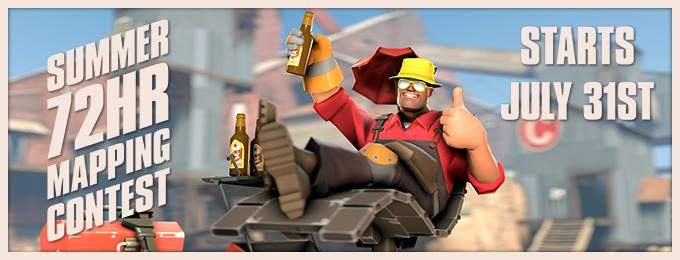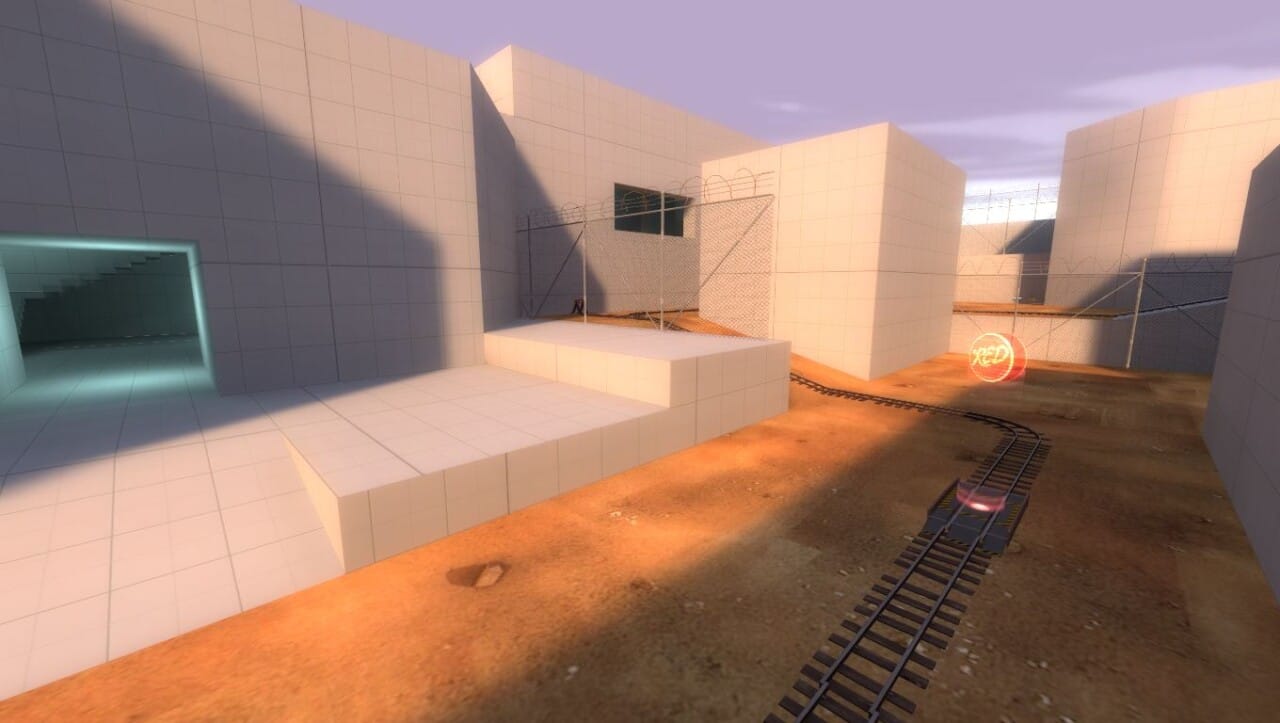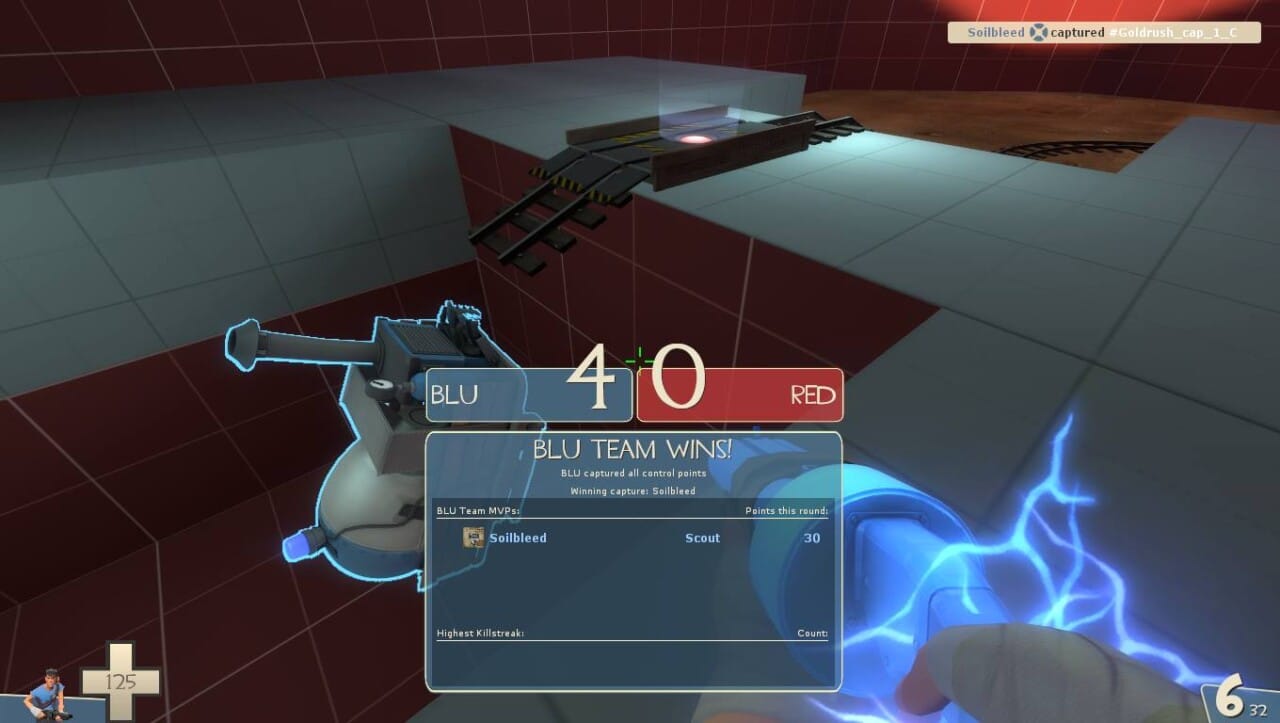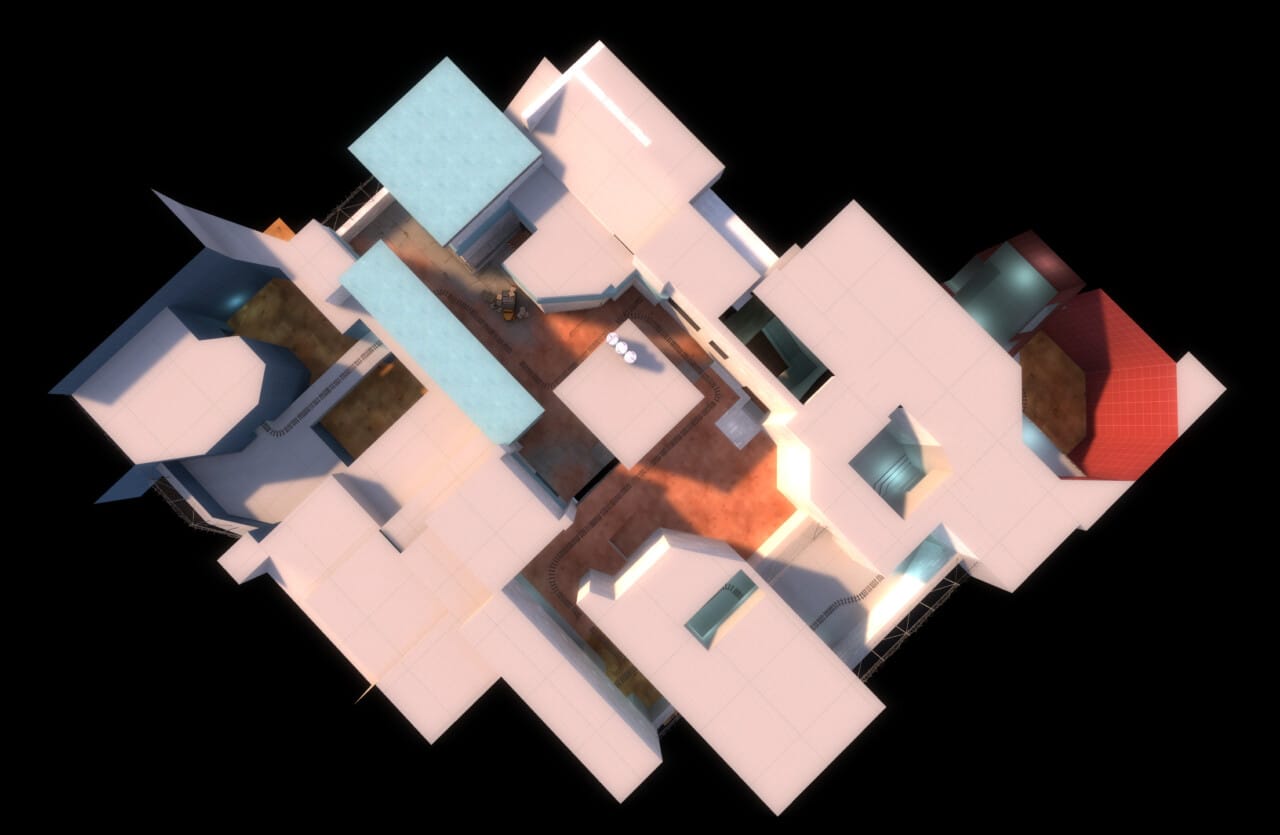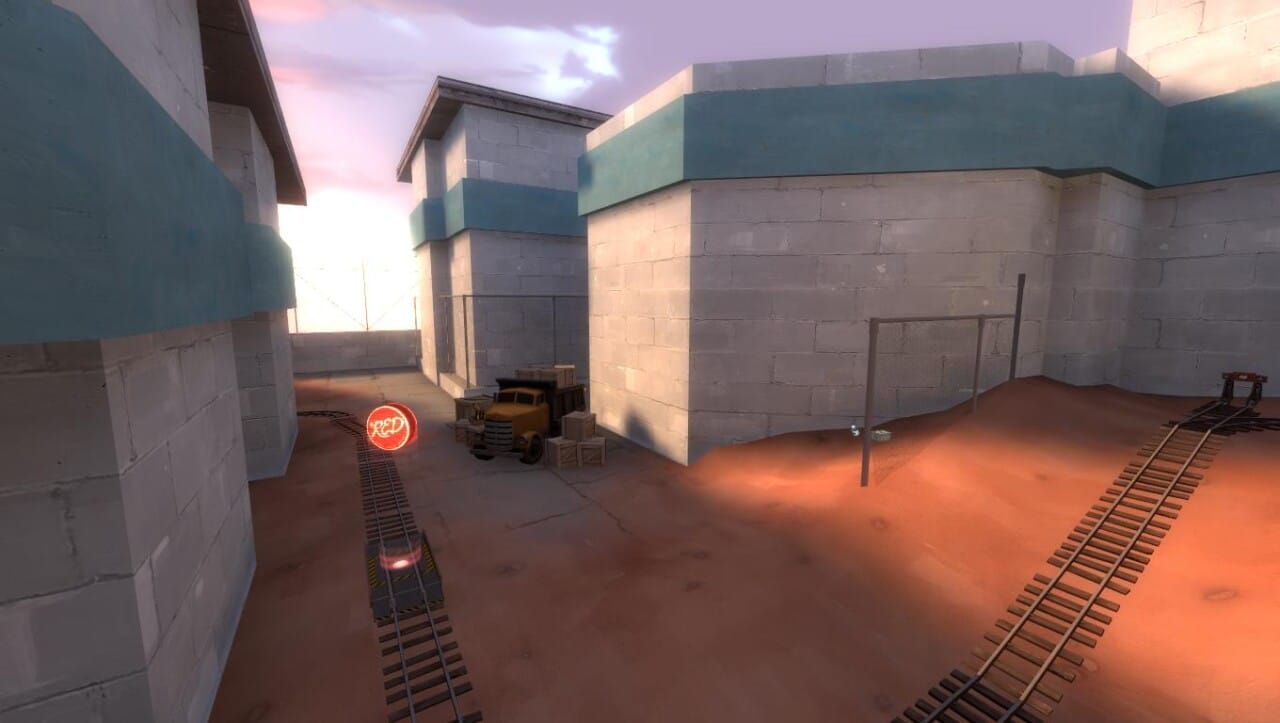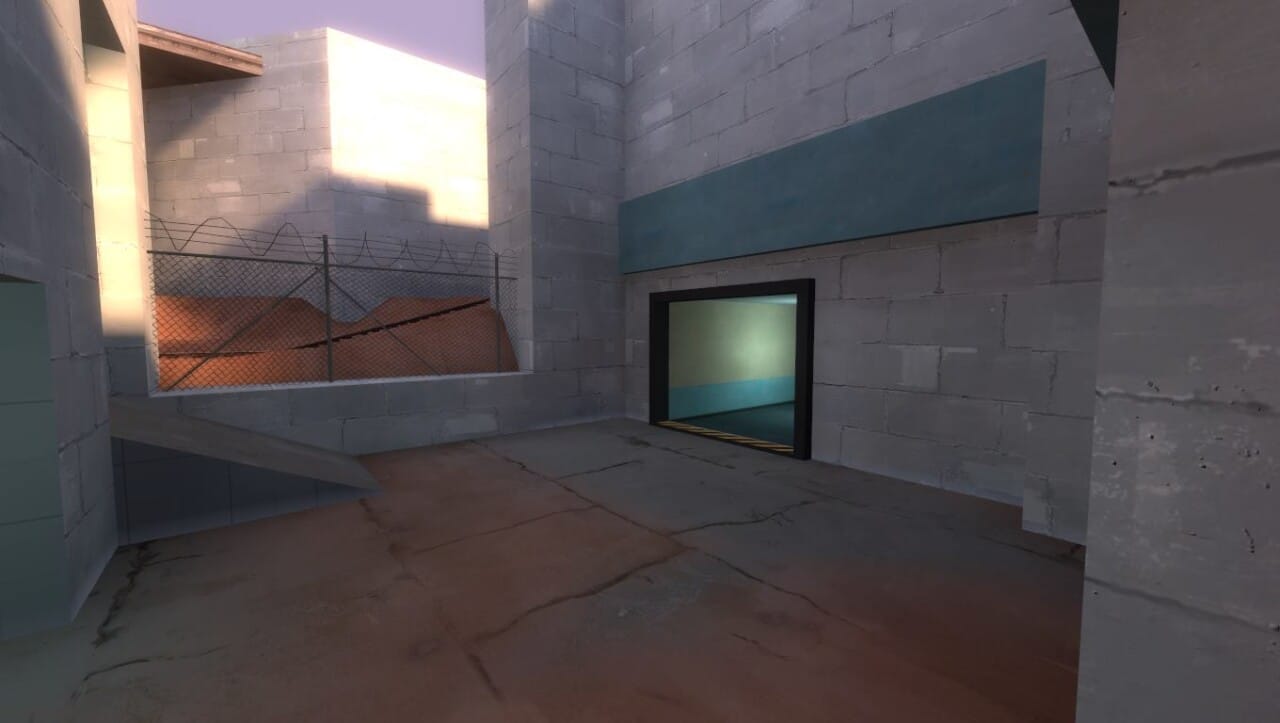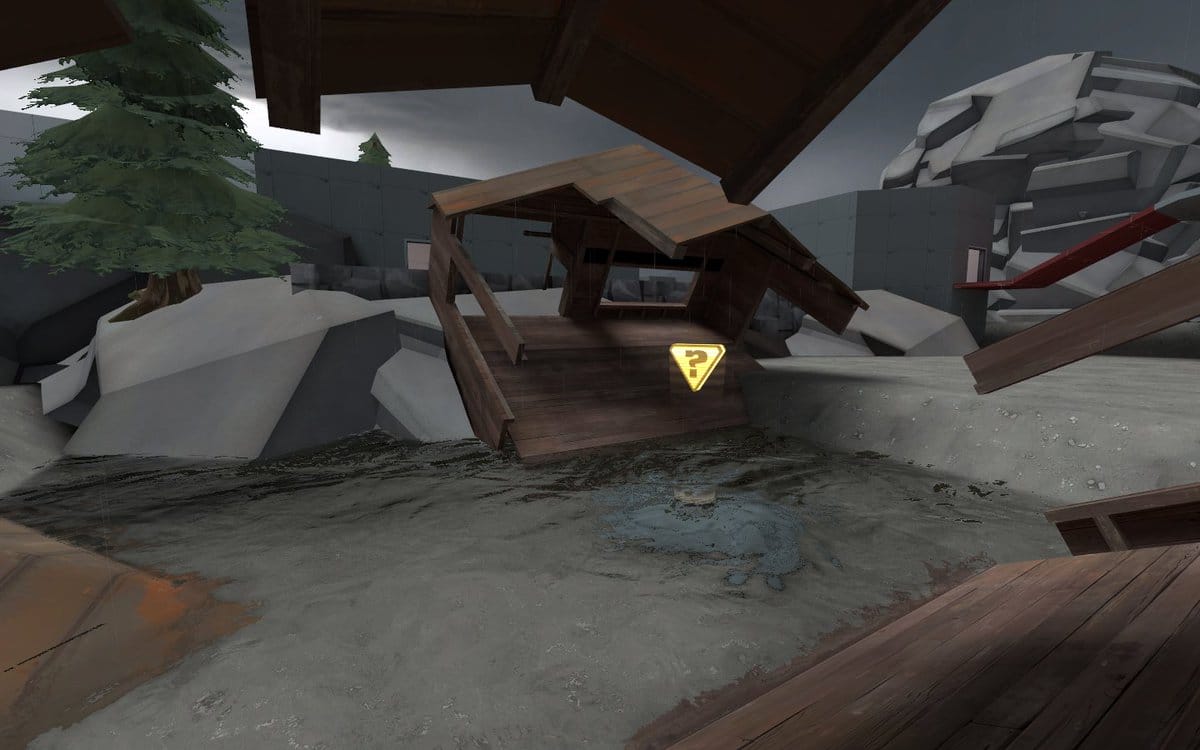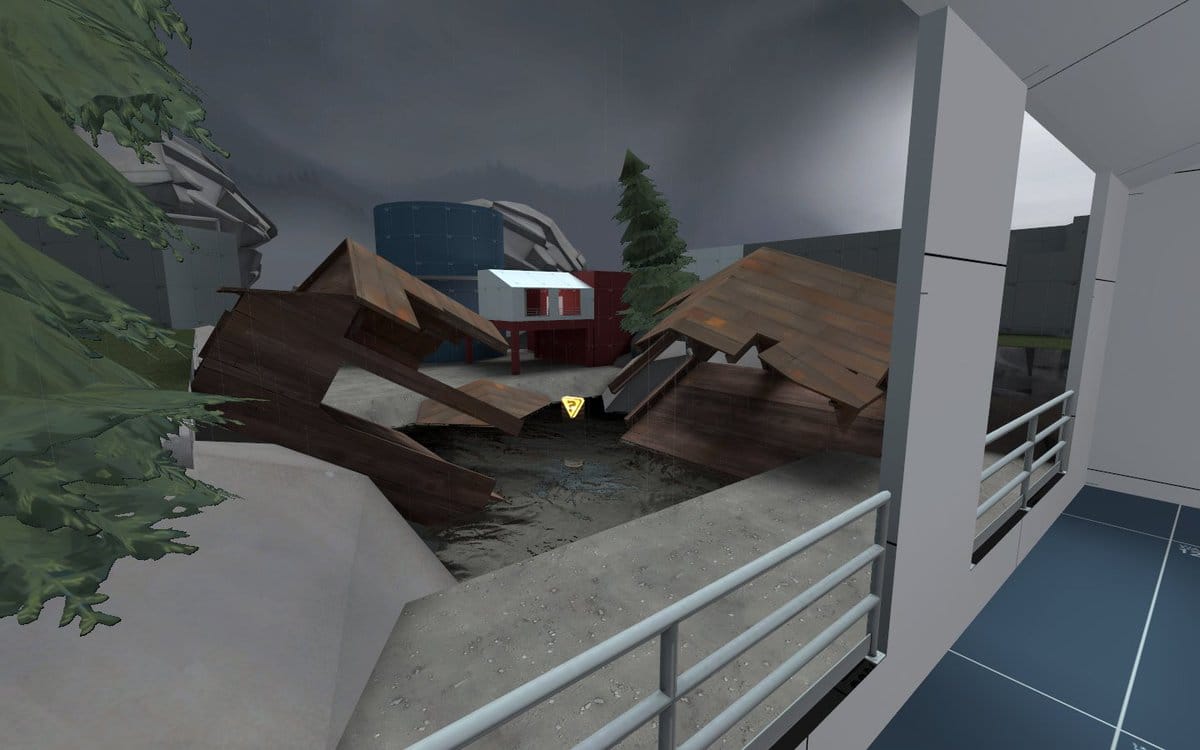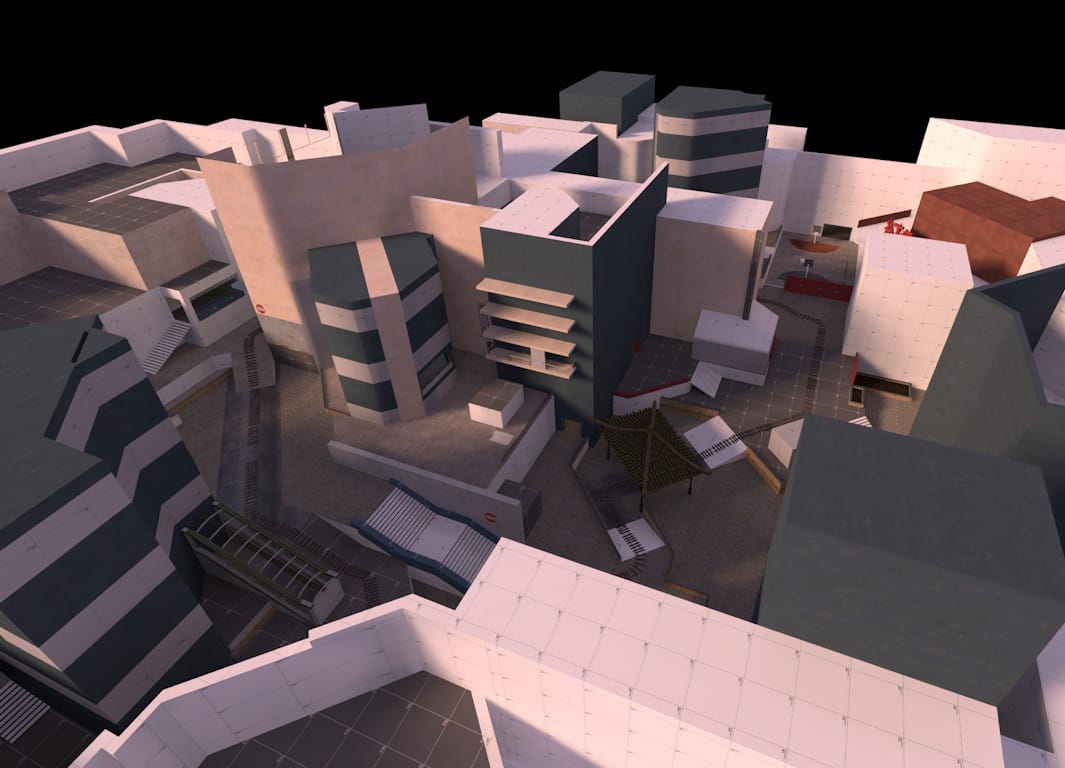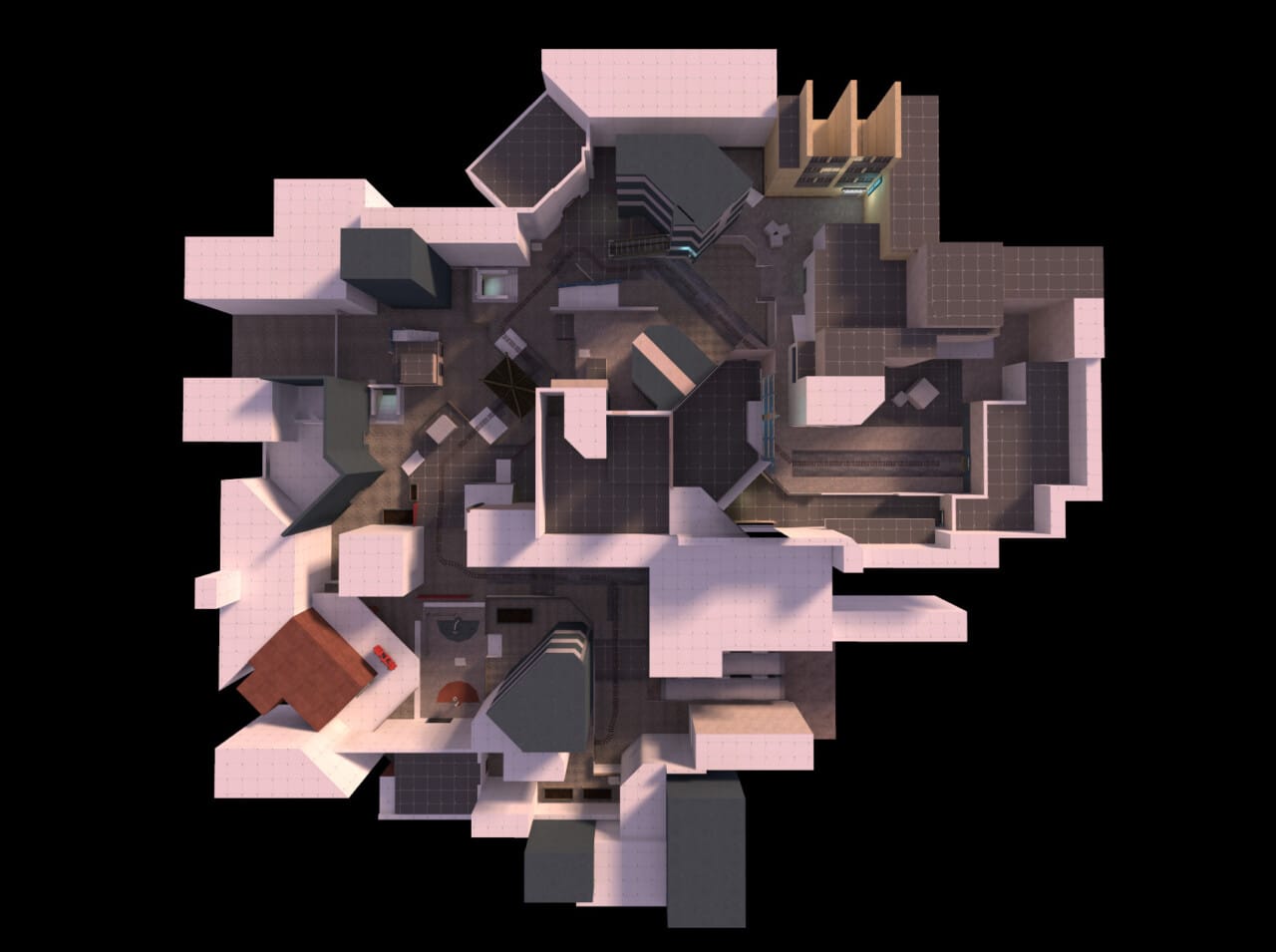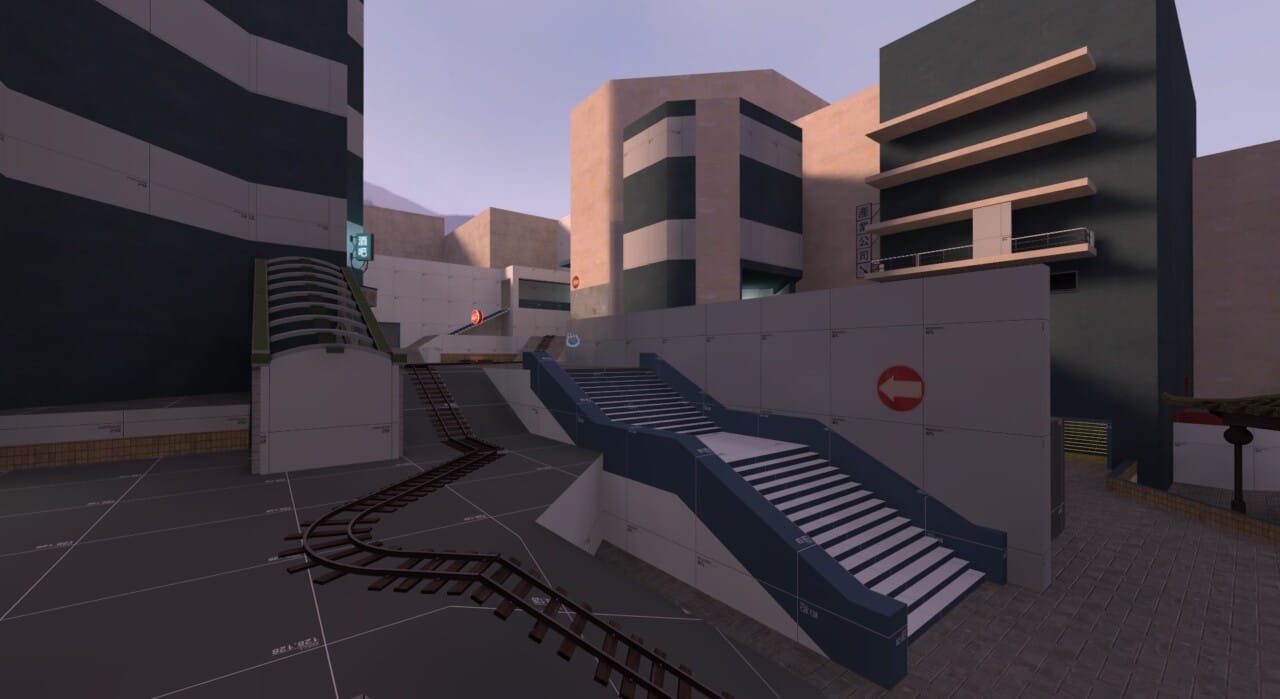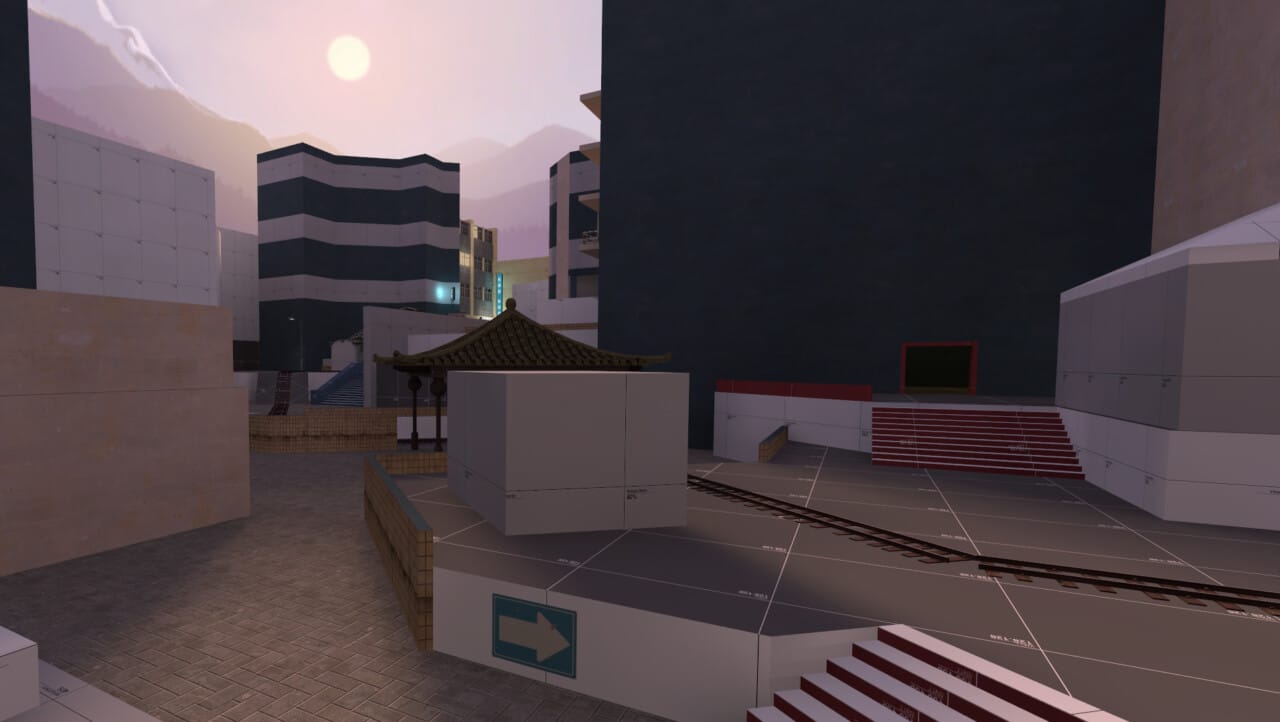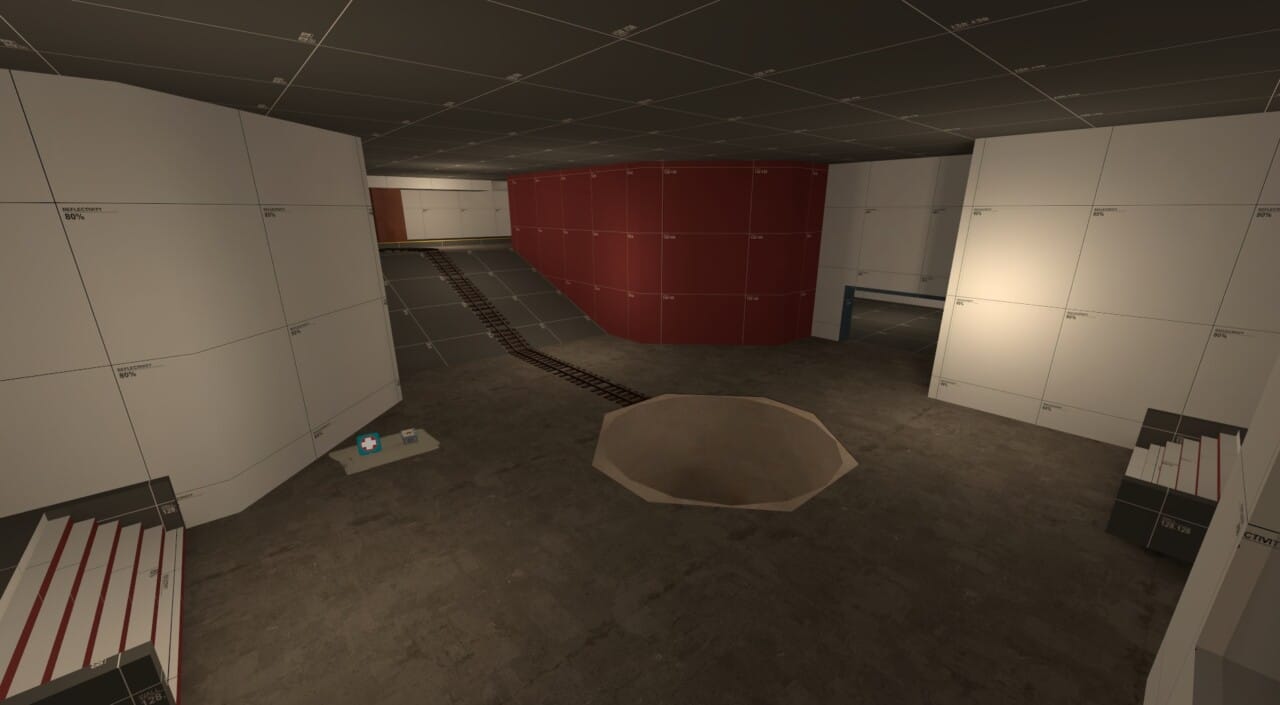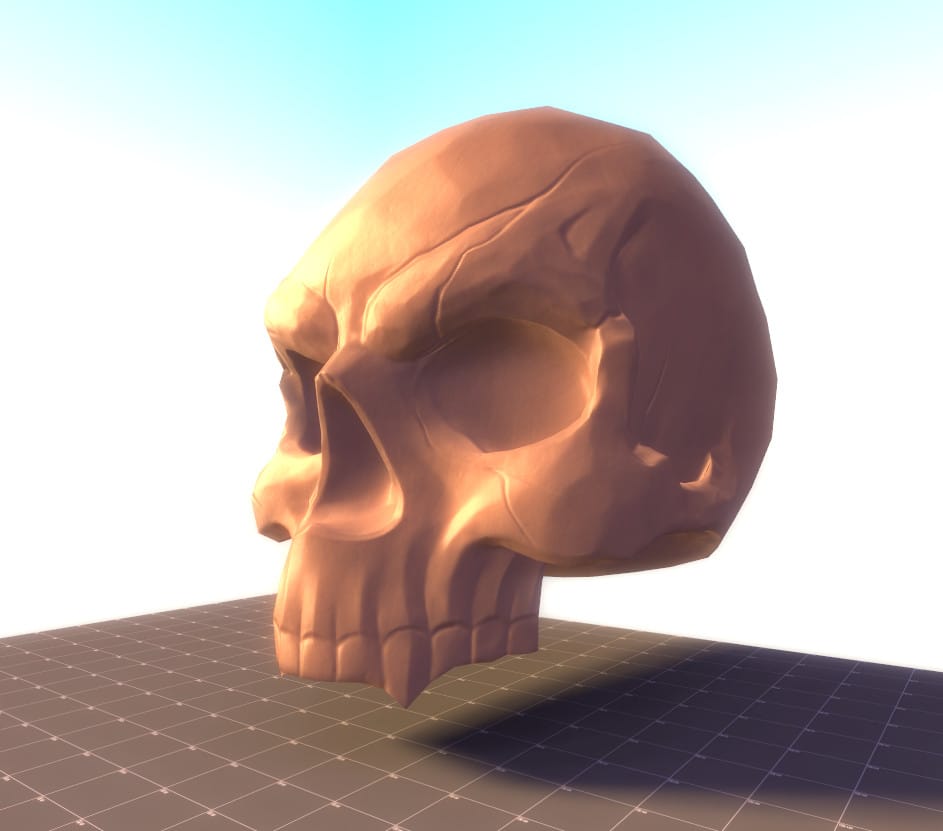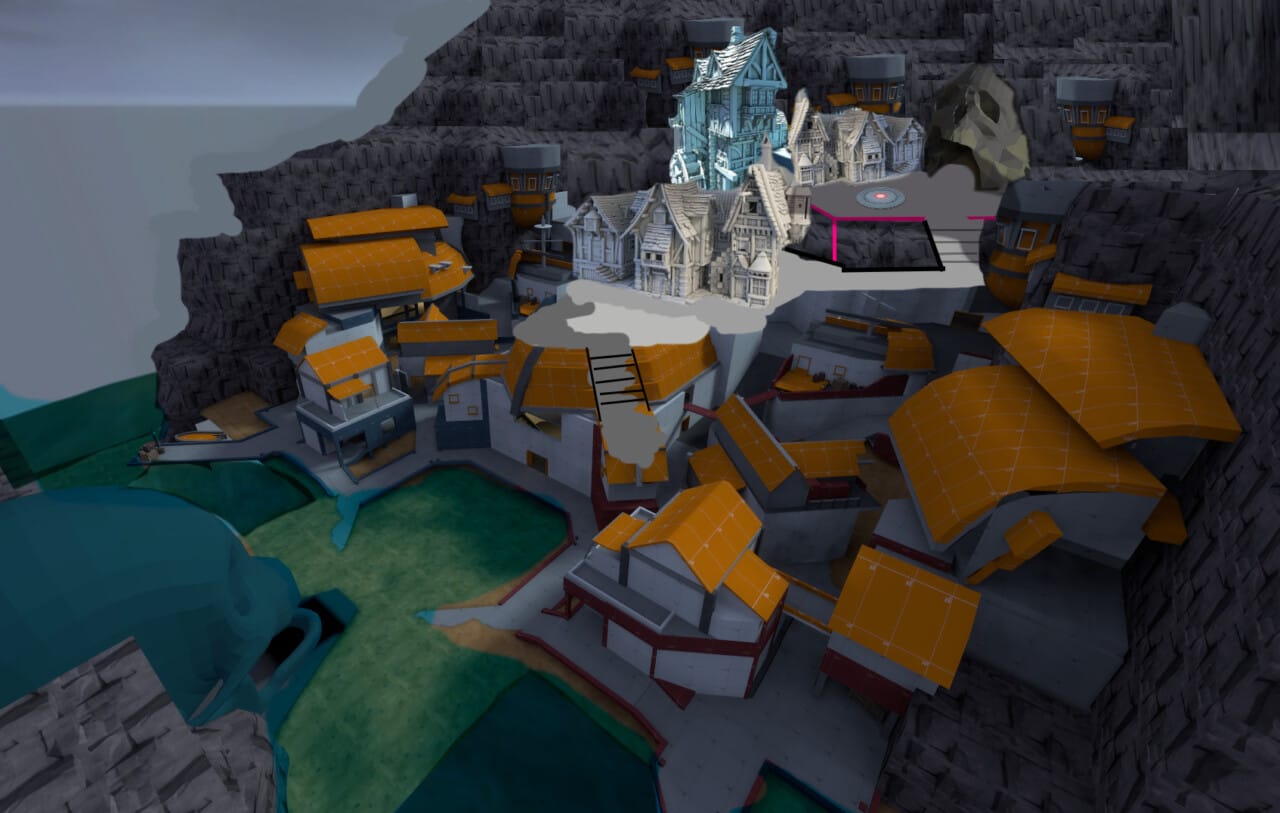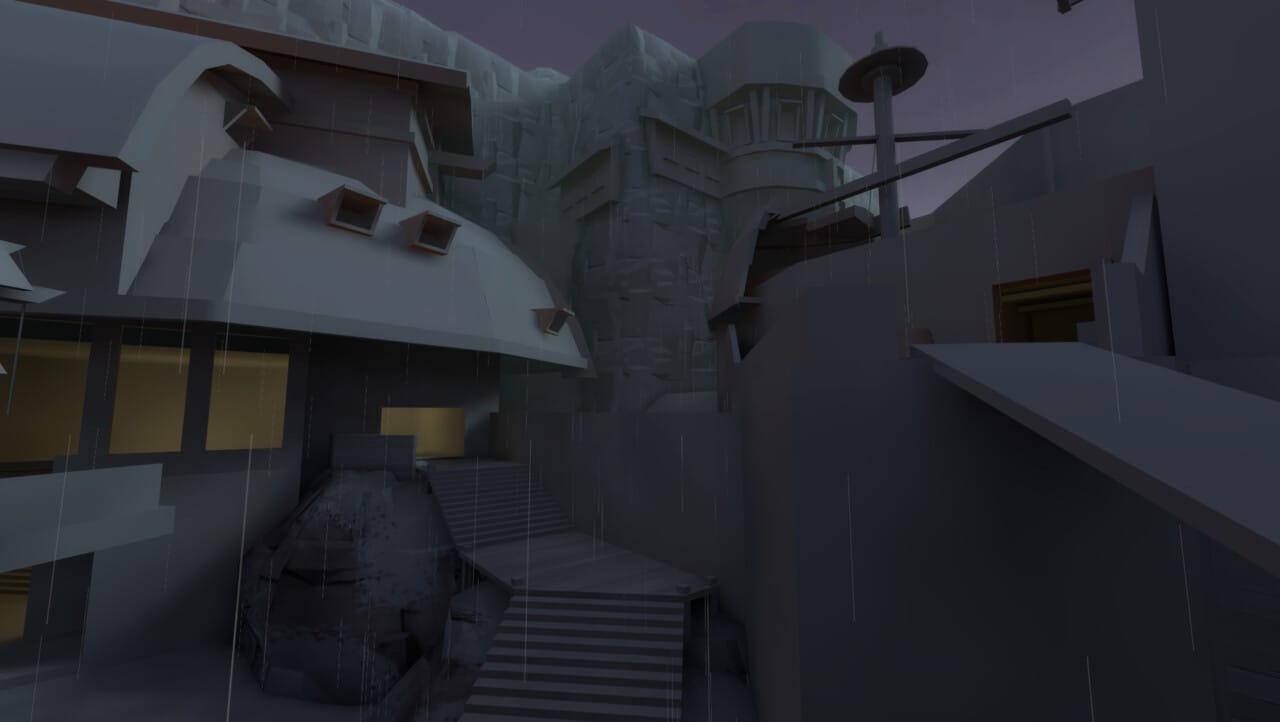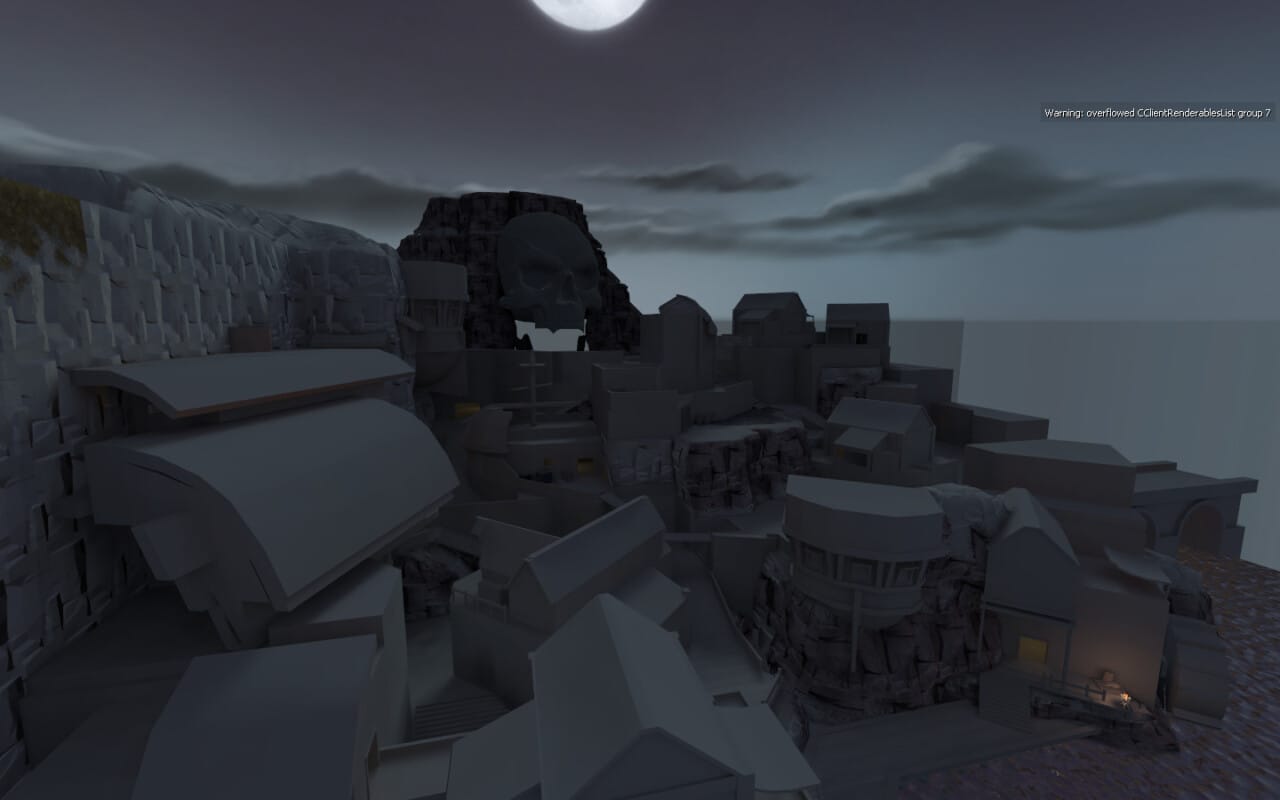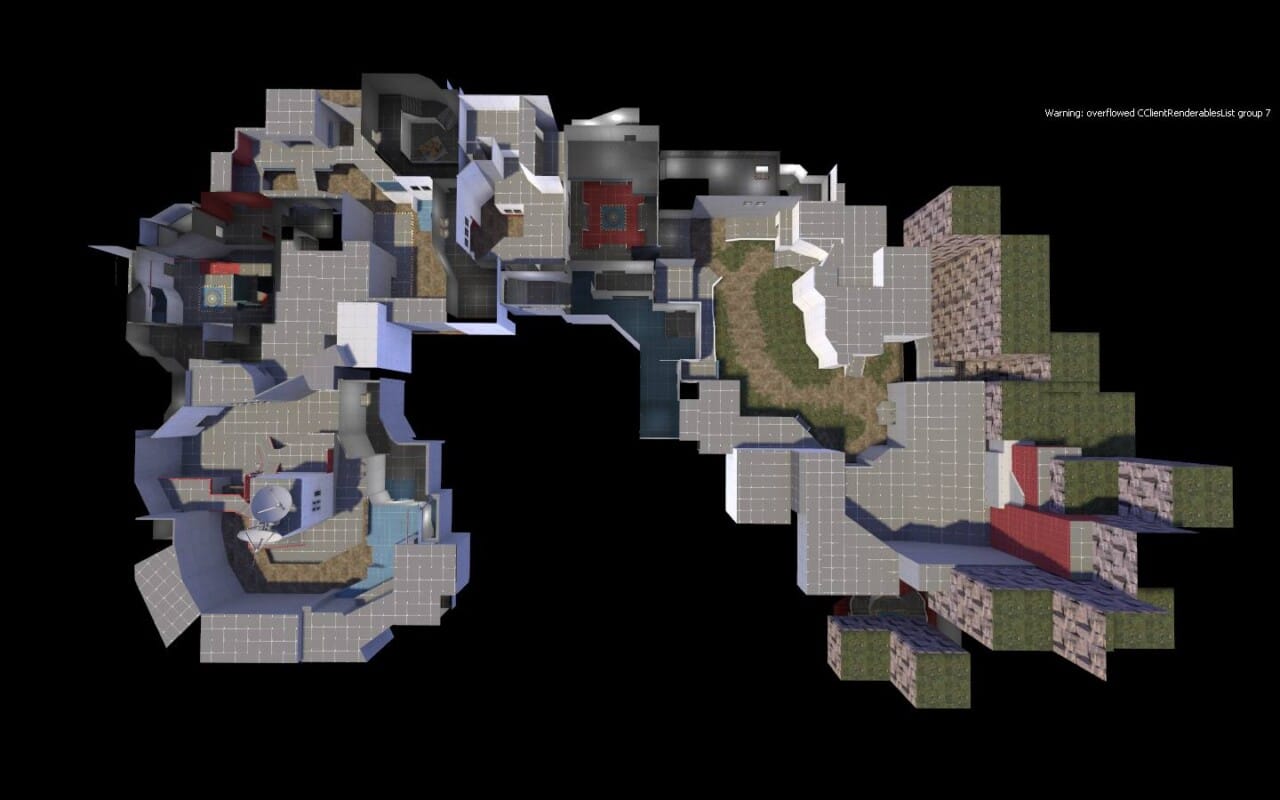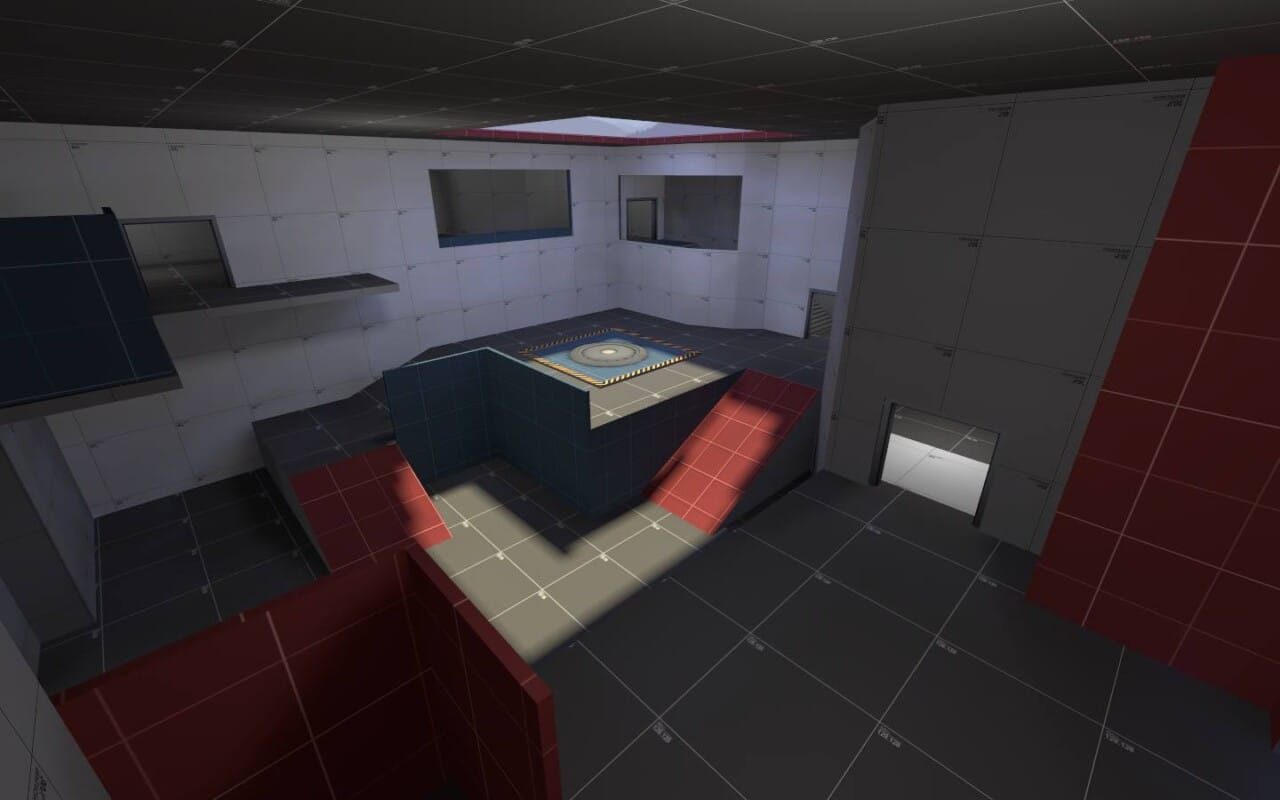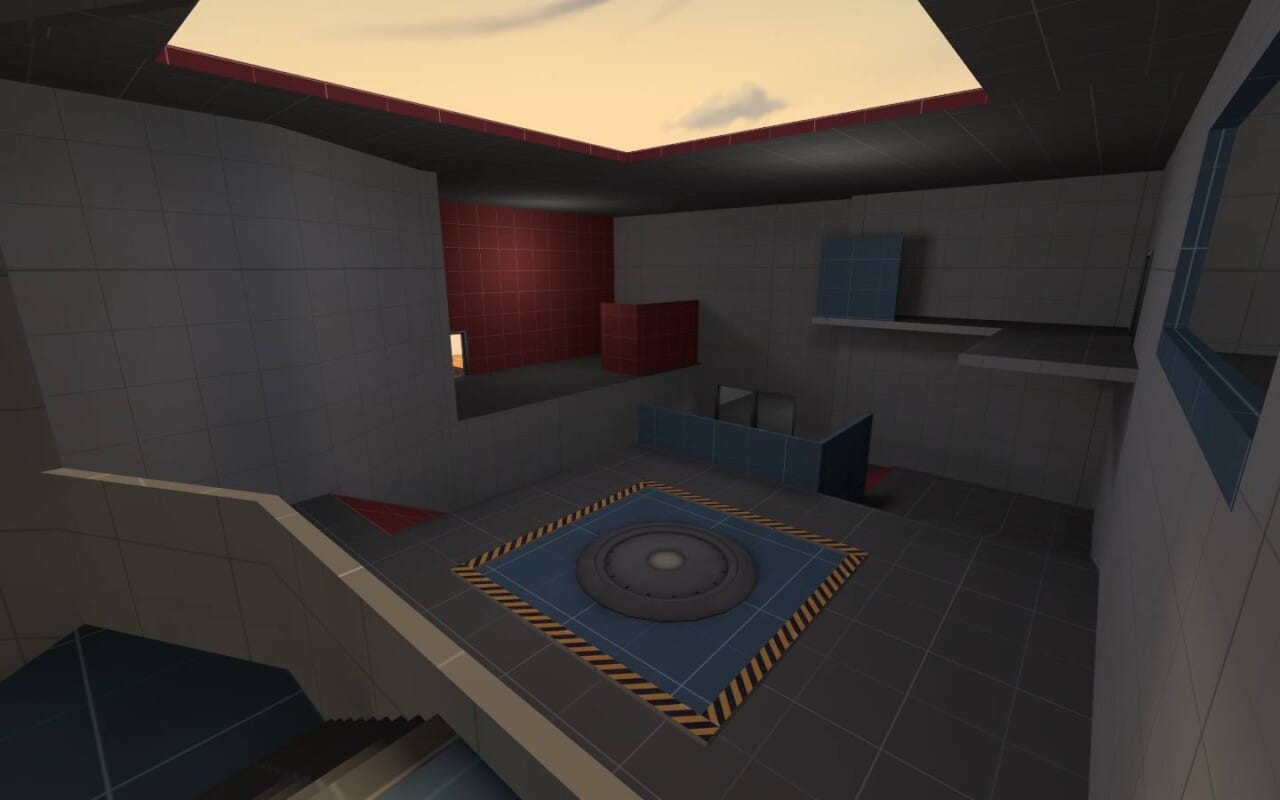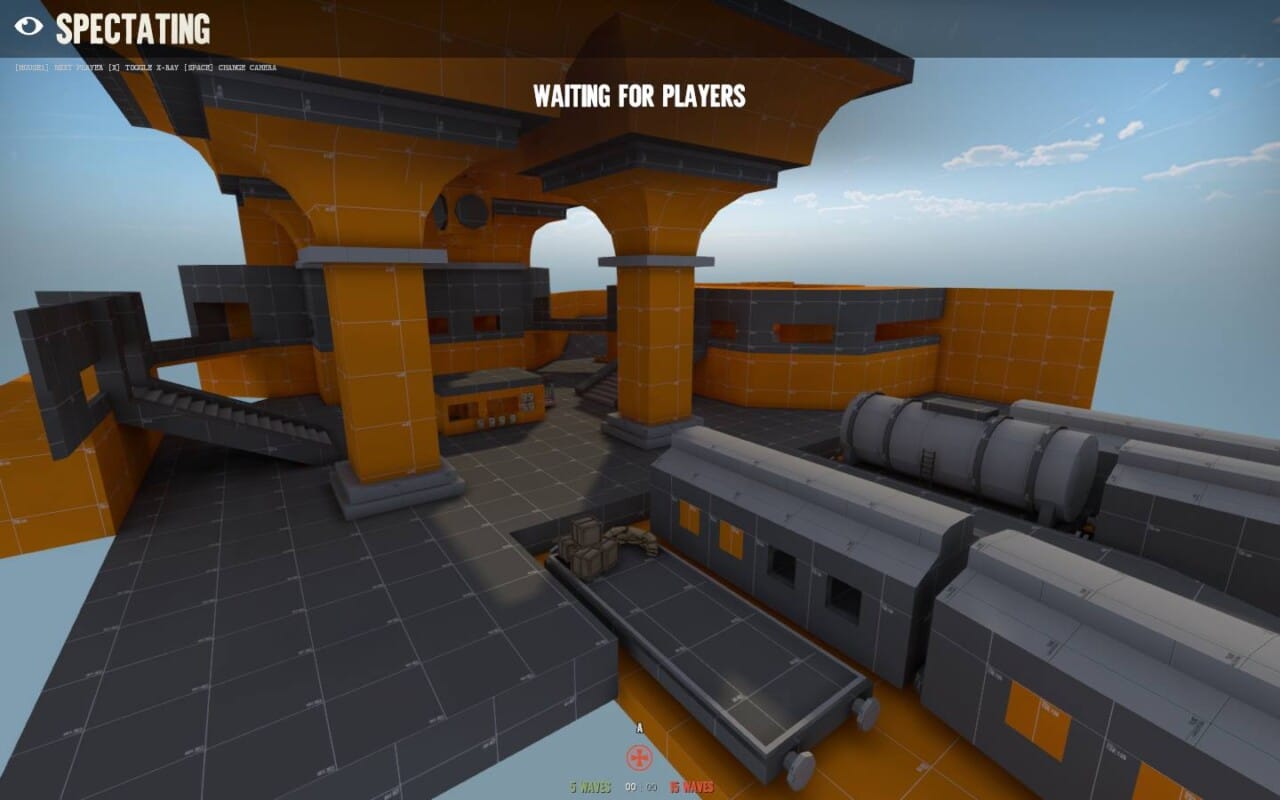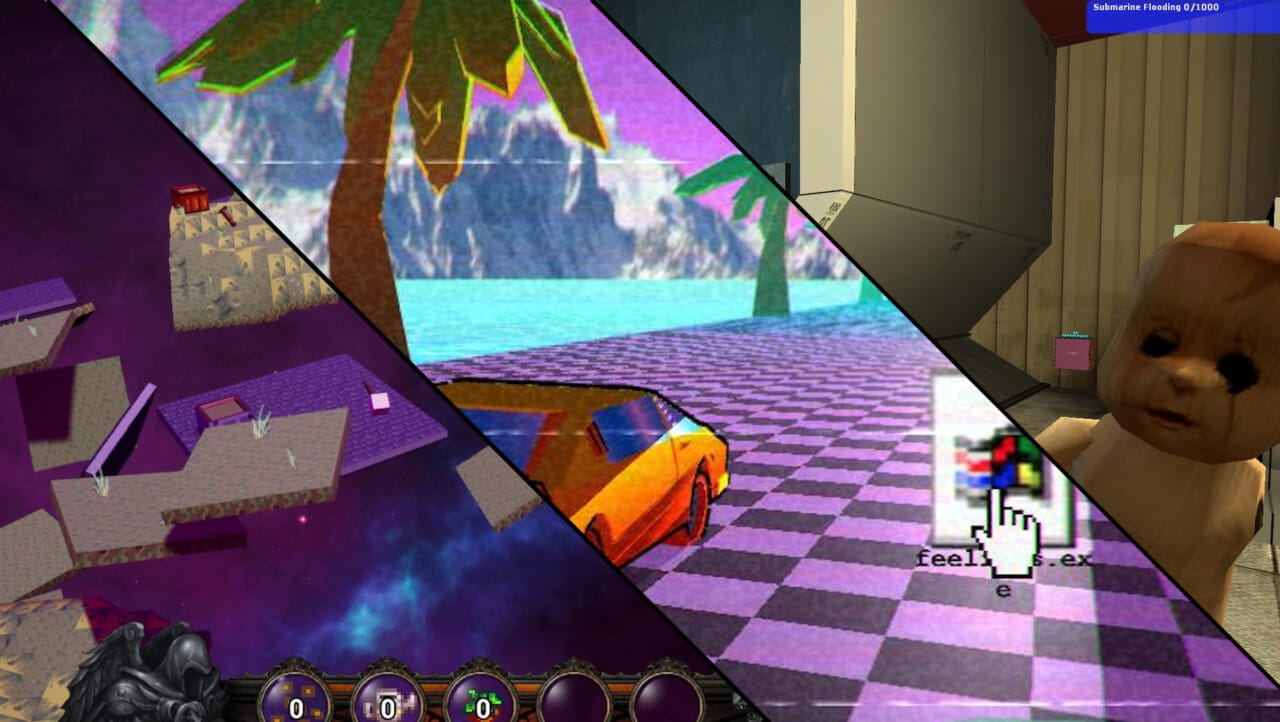

Introduction
As mentioned in the Projects From The Vault blog post, this will be a trip down memory lane and a dive into the past decade of all the game jam projects I have been a part of. Through 2017 to 2020 I was on an absolute tear! I consistently attended The University Of Abertay’s Global Game Jam site and worked with the same 3 amazing developers to produce “games”, that looking back on now, I feel rather proud of. If we’re being honest here, these aren’t ‘amazing’ games (they closer resembled the nightly visits from the Benadryl hat man who frequents my flat) but they were conceived and completed within the jam deadline, and honestly I think that alone deserves a pat on the back and a victory pint. In the end, it was the journey that mattered, and not necessarily the destination.
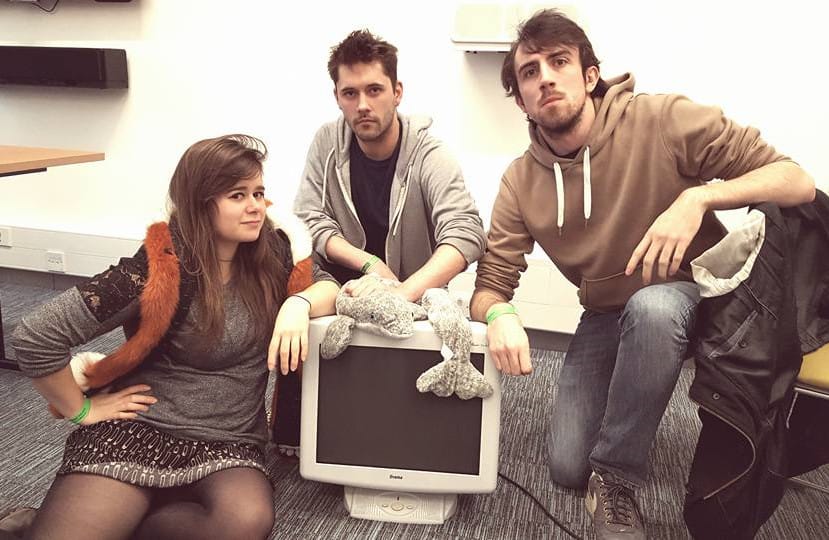
Post 2020, I wasn’t living in Scotland any more and with my team members committing more time to organising and supervising the Jam, and less time participating, the Global Graham Jam (yes that was our team name), hung up its gloves and faded into distant memory. This was when I shifted to participating in Ludum Dare, a remote game jam held multiple times a year. These Ludum entries were far less successful.
It turns out making something as a solo developer proved a far greater challenge than making something as a team (especially due to my limited programming experience). But I tried my best and had fun in the process which is ultimately what counts. All projects are still displayed on their respective Jam websites, however whether they are worth a download and a play, is another matter entirely.
Note: At the time of publishing this post, the Global Game Jam website appears to be down. Thus, none of the links to Global Game Jam projects will work.
ECHOCHAMBER
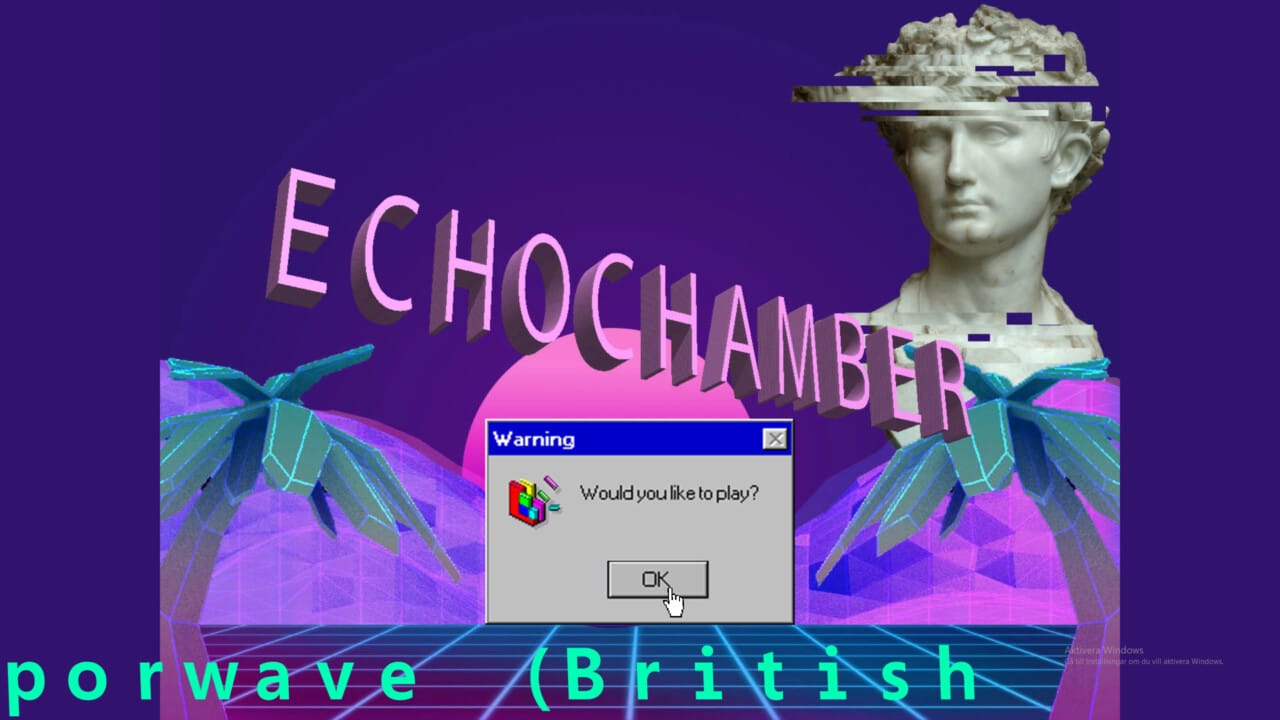
2017 where it all began. Of all the game jam events we did, I seem to remember this one the most. which is strange because I think this was the one I was most sleep deprived for. I had joked previously in 2016 that I was going to enter the Global Game Jam and make a game based around finger puppets holding a séance (the plan was that I would fit the theme around it when it was made public). I would ultimately not compete that year due to reasons I cannot remember, but found it hilarious that the theme was revealed to be “Rituals” (this would ultimately start the trend of me correctly guessing the Global Game Jam theme each year prior to the event).
In 2017 however, I was determined to jam, and I wanted to make a vapourwave game (again, like a child determined to force the square block into the triangle hole, I was going to make this idea work with the theme). I remember missing the start of the jam because I was in Glasgow seeing a show. Midway through the set however, I get a message informing me that the theme was “Wave”! (It should be noted, I never correctly guessed the theme again, making this trend extremely short lived).
I had done weekend jams before, so this wasn’t a new experience for me, but what was new, was that it was done in the university surrounded by hundreds of students all working on their own projects. This was a great atmosphere as it really did feel like we were “all in it together”. I feel like you don’t get this same experience working alone in a bedroom. Sure you can join discords with people posting their work or track updates via hashtags on a twitter feed, but its not the same as getting up from your desk to take a break, stretching your legs with a bit of a walk, and chatting with other developers as they gush over the latest thing they’ve just implemented into their build (It almost never actually works when they try to show you, but the enthusiasm is contagious). If you’ve never participated at an “on site” game jam, I highly recommend it.
ECHOCHAMBER wasn’t so much of a game, as it was an… experience? The closest I can get to describing it was as an interactive novel, or maybe a point and click adventure game. You press forward to make the car and drive and simply answer questions from Caesar (your Dolphin passenger) who starts spouting philosophical texts we found on Tumblr at 2am. The design process would consist of someone on the team saying “oh that’s a fun idea” and then it just got added. There wasn’t a long term plan or even a design really.

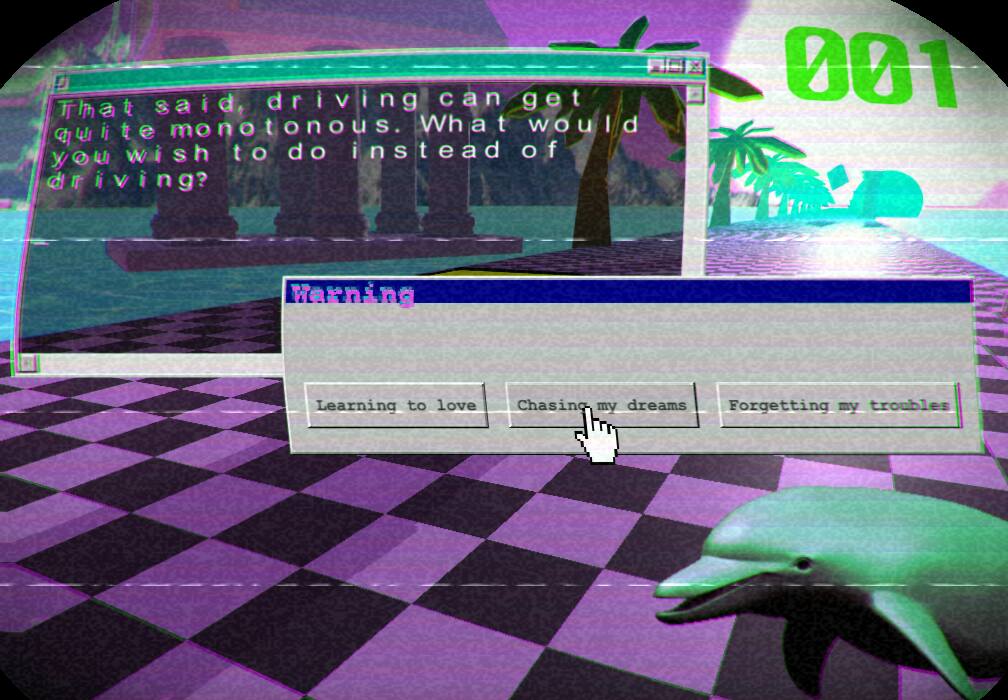
It was simply “what is cool and weird and how do we fit it into the framework of the game?”. This sort of manic approach to Game Development was pretty fluid and liberating, and really lead to some genuinely creative ideas. There was probably a fun game hidden under all the memes and meta humour that we could have finished, but as with the 72 hour Mapping Jams, you really do lose a lot of the momentum on a project once the jam has officially ended. In a way, I’m actually glad that we never worked on it further. The project remains a self contained entity, locked into that special weekend in 2017. A project conceived, made and ultimately finished, cemented in history. Its special to me, and had we dug it up months later and continued working on it, changing it into something it was never intended to be, it would have felt wrong. Sometimes its enough to simply make something and then let it go.
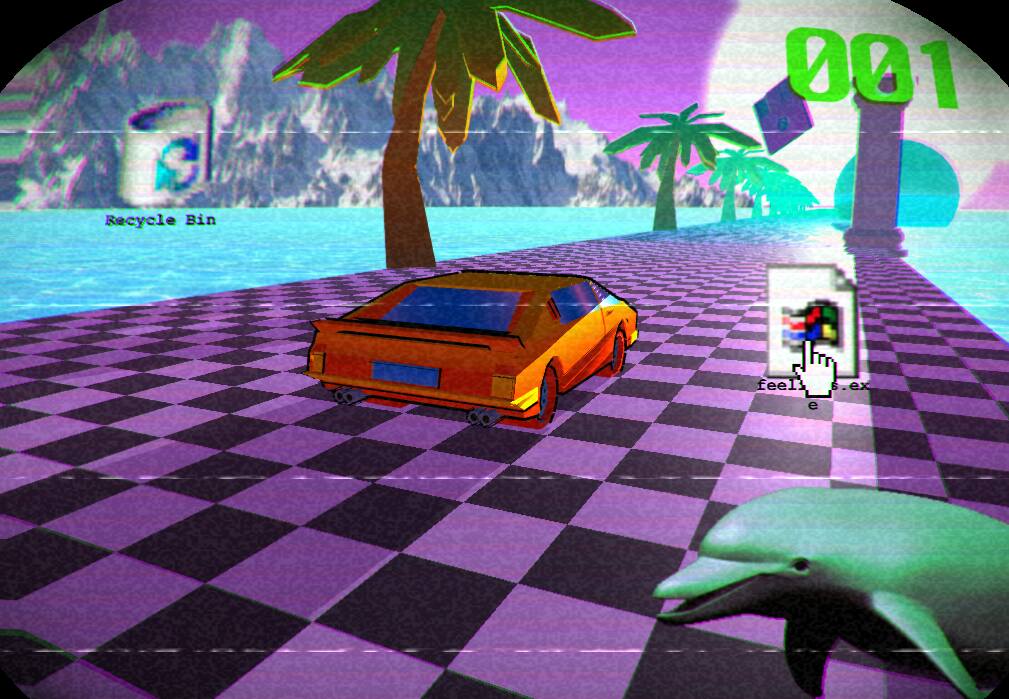
You can still play ECHOCHAMBER to this day as the executable file can be downloaded from the Global Game Jam website.
Local Radio DJ Simulator Hero 2
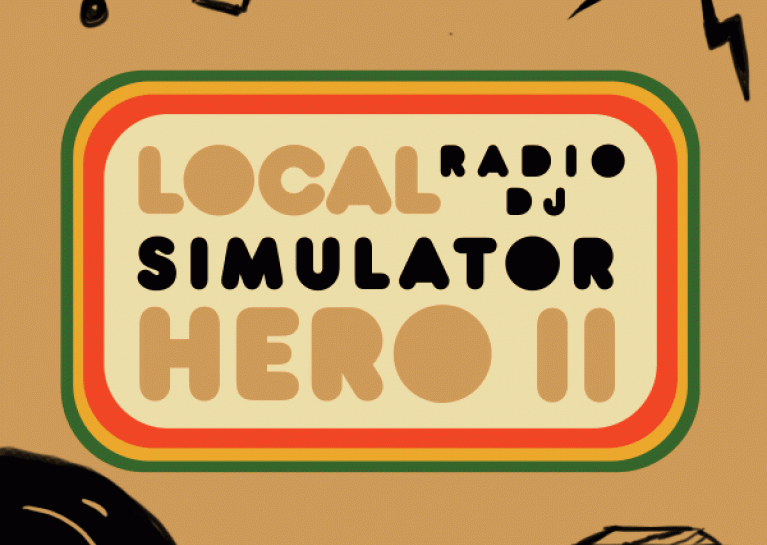
The following year, the team returned to work on our second Global Game Jam game “Local Radio DJ Simulator Hero 2″, only this time, we had a new member. (I should probably take this moment to mention Gaz, Kayleigh and Robin; the other three members to make up The Global Graham Jam, who without, I would not be writing this Blog post. We had all worked together on Glitchspace prior to this, and it was a pleasure working with them again on these four Global Game Jams).
The theme of this year was “Transmission”, and we were pretty convinced on building something using the XBOX 360 DJ Hero controller that Gaz had brought in before the opening ceremony. Taking the original purpose of this peripheral literally, we ended up making a game where you played the role of a Radio DJ, who flicked between taking calls from various listeners and playing the songs that they requested. In a similar vein to ECHOCHAMBER, the game was essentially an interactive novel, with minor “gameplay” mechanics; the key one being to decipher what song the caller actually wanted to hear as they never gave you the name specifically, but rather a description of the song itself. “I want to hear a song, that a man dying from thirst in the desert would want to hear” the caller would yell, as I manically rummage through the music collection in search of the Wonderwall cassette.
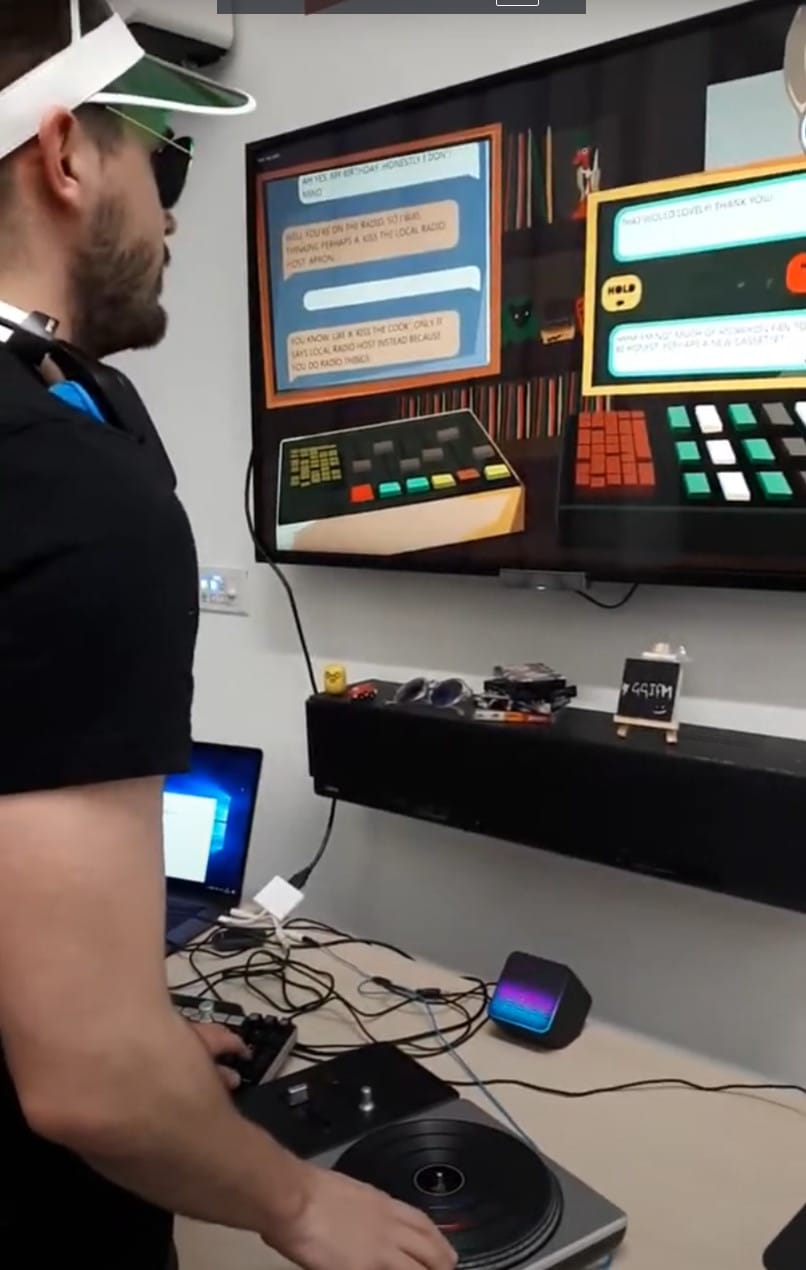
The songs themselves were MIDI renditions of famous club bangers from the 80s, 90s and 2000s, each with an animal pun slipped into their title (it gave us all a good chuckle and kept the copyright lawyers happy).
The DJ Hero controller could be used to scrub back and forth through the song, adjust the tempo and pitch, and it even had button with the sole purpose to spam an airhorn sound effect when mashed by the player. I should note that these were purely aesthetic, but I could definitely see them being expanded into actual gameplay mechanics; i.e. a listener telling the player that they have a job interview in 1 minute and must listen to a full song by Kurt Crowbain if they are to ever be successful in getting the job.
As a game, this definitely had some potential. Revisiting it today, I could see it fitting into the same corner of the market as games such as “Paper’s Please” and “Not Tonight”…
“Local DJ Hero – a radio DJ desperate to keep ratings high during the graveyard shift at a failing Local Radio Station, takes calls, plays the hits and gives regular traffic updates, all in an attempt to keep the station and their career alive”. (I think I had just finished reading Alan Partridge’s second book ‘Nomad’, before the game jam, which might have been why I leant so hard on the Local Radio DJ theme).
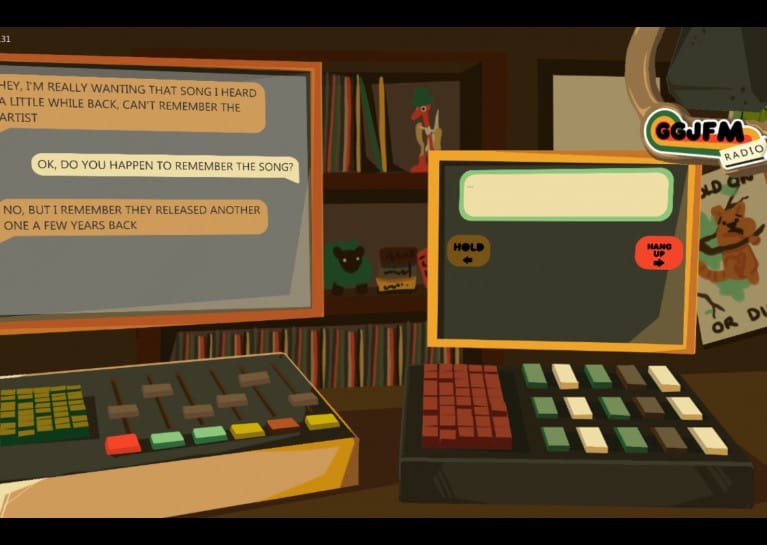
It “could” work with a bit of a redesign. Much like ECHOCHAMBER, you can still download this executable from the Global Game Jam Site, however its seems unplayable. You actually need a DJ Hero Controller to even start the game; I couldn’t get passed the title screen on my build (but could get an extremely loud “YEAH BOI” by pressing 2 on the keyboard which kept me entertained for a couple of minutes). And whilst we could change it to function solely with a keyboard setup, I really do feel like it loses a lot of the charm without the DJ deck. It was definitely one of those “you had to be there” kind of games. At least I still have a midi download of Gasolina saved on my HDD to remind me of the weekend.
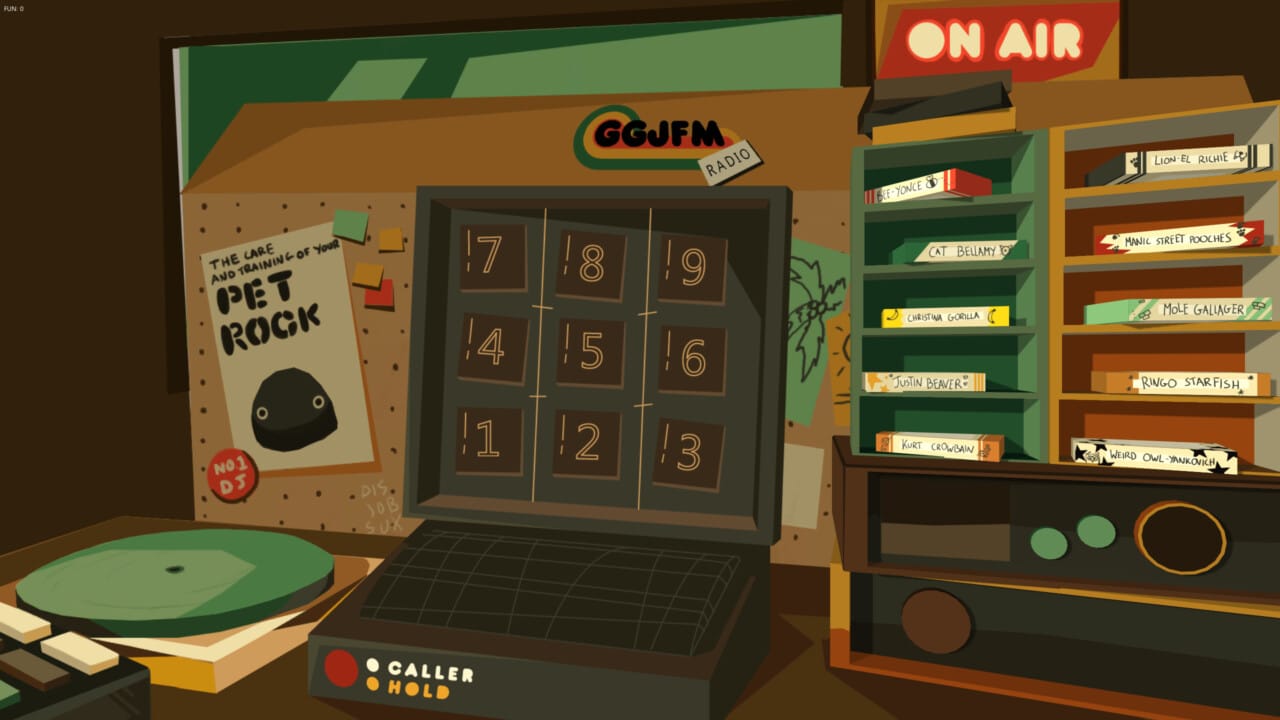
What Does Home Mean To You, Graham? 3
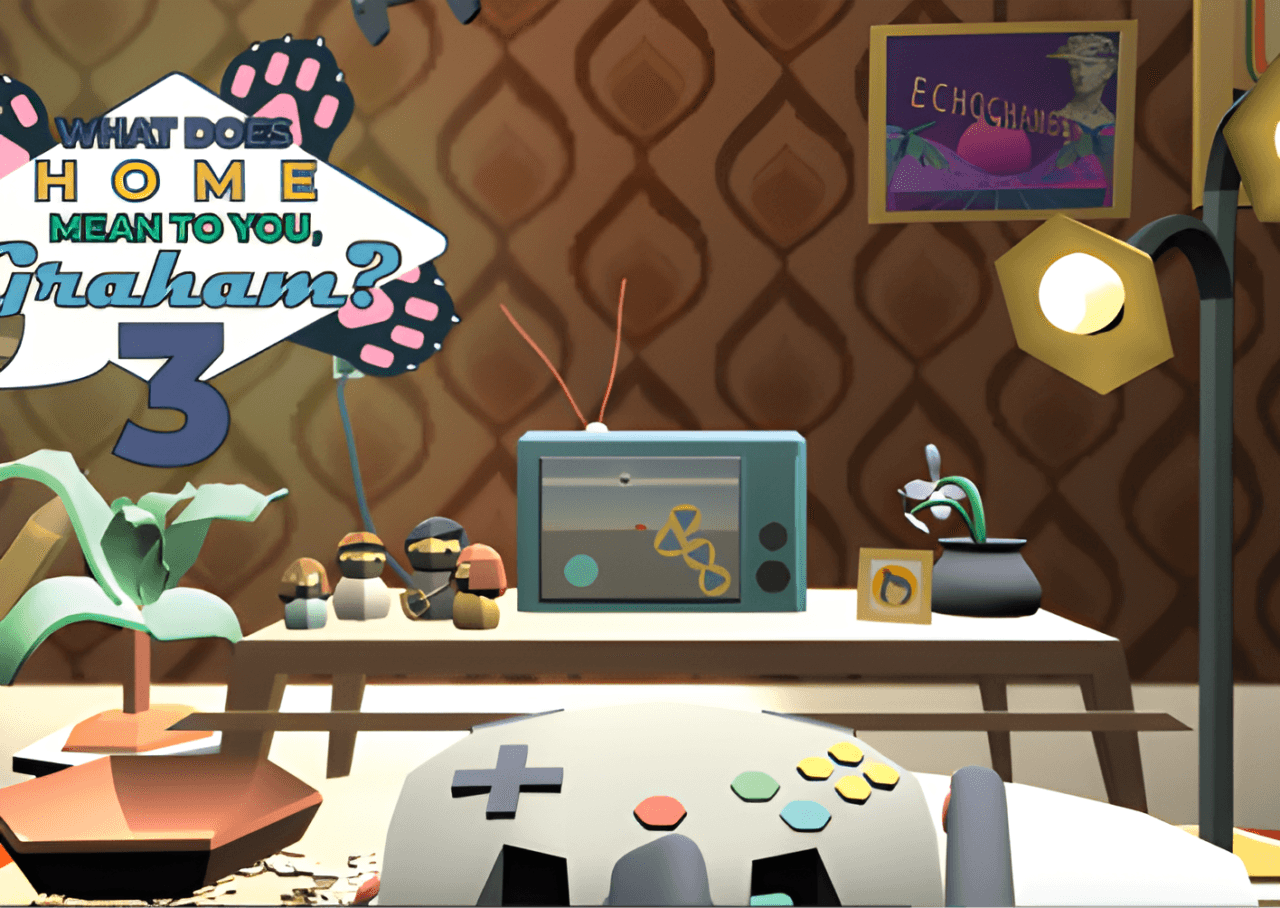
What Does Home Mean To You Graham? (full name: “What Does Home Mean To You, Graham? 3, the sequel to: Local Radio DJ Simulator Hero 2, the sequel to: EchoChamber” – this joke got old by our third entry and was subsequently dropped in 2020), was the third Global Game Jam entry by the team. This is where the jams all begin to merge into one for me. I don’t actually remember all that much about the jam itself other than it being developed to use an N64 USB controller I had purchased and that PS1 Hagrid was used in the initial development of it (a trend I would continue on for jams in the future).
I do remember the game pretty vividly however. The player is stuck to the couch and is asked to find and obtain certain items from within the room by their parents. Essentially a scavenger hunt, except they can’t move. Instead they extend out their paw (I should mention, the player character is a cat for some reason) and grab the item they have been requested to obtain. They then retract the paw holding the item and earn points by give it to their parents. Simple…
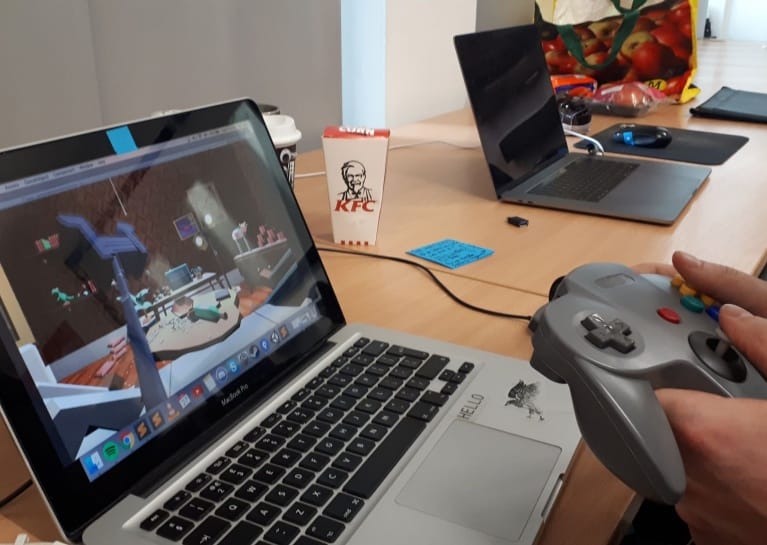
Except every item in the scene is a physics object. Absolute chaos would unfold as you extend your paw to grab the plant at the back of the room, but accidentally nudge the bookshelf, causing it to collapse onto the dining table, which in turn would flip the jigsaw. A domino effect that creates a completely un-navigable room of mess… And then your parents would ask you to fetch the coffee pot, completely un-phased by the carnage you had just witnessed. There was also a little DDR game you could play on the TV, which I don’t ever remember us implementing but it’s cute that it’s there.
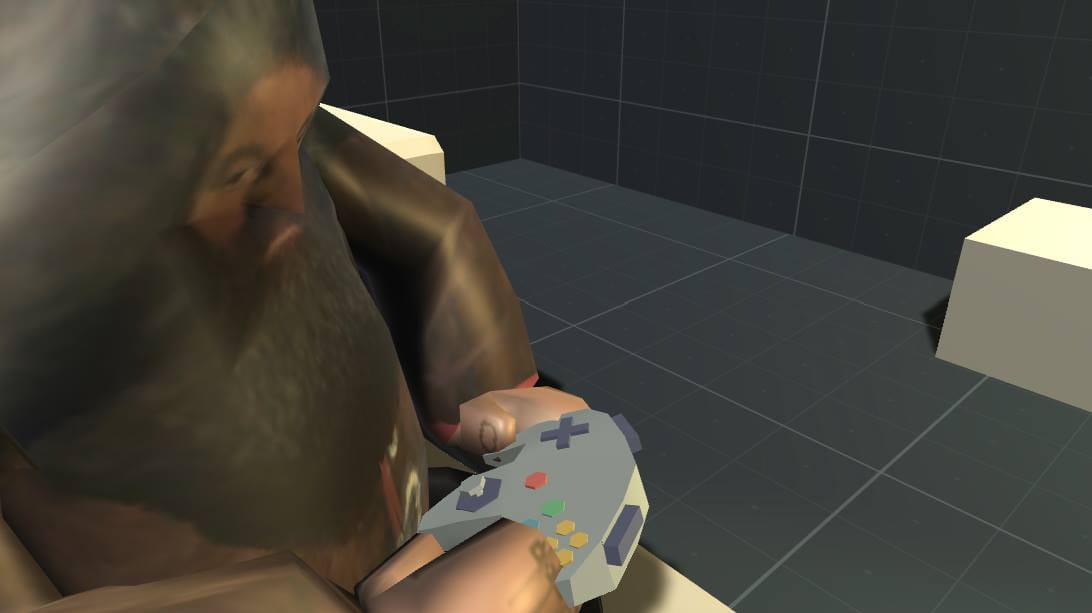
This was probably the most “game” game jam entry we ever worked on and I could definitely see it being developed into a small multiplayer party game. All players fighting each over a single specific scrabble letter from a bowl of scrabble pieces that ultimately ends up on the floor.
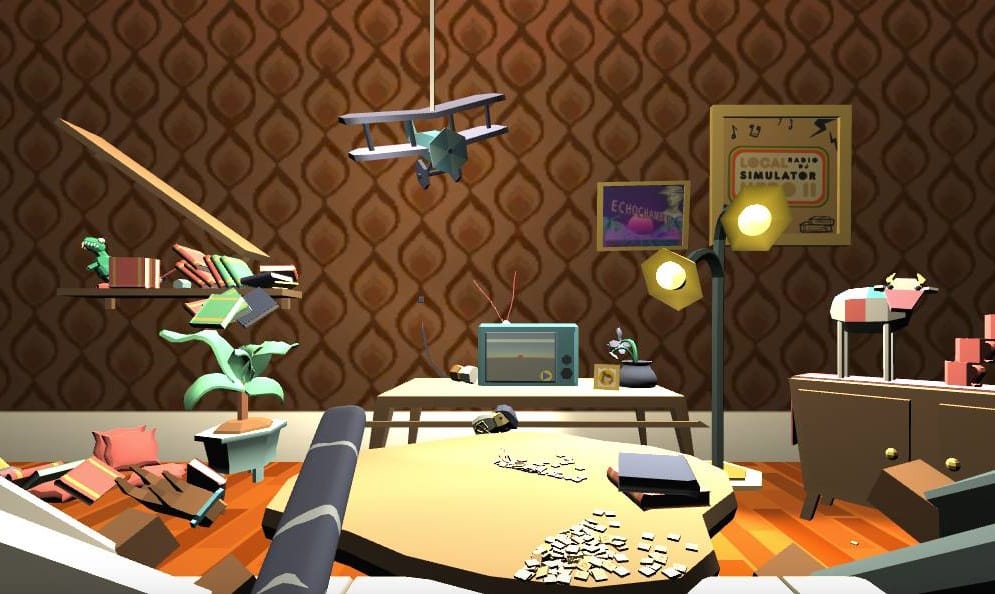
Only a MacOX build can be downloaded from the Global Game Jam Site, and as my Macbook recently decided to throw a tantrum and no longer turns on, I was unable to boot this bad boy back up and try it out (which is a shame).
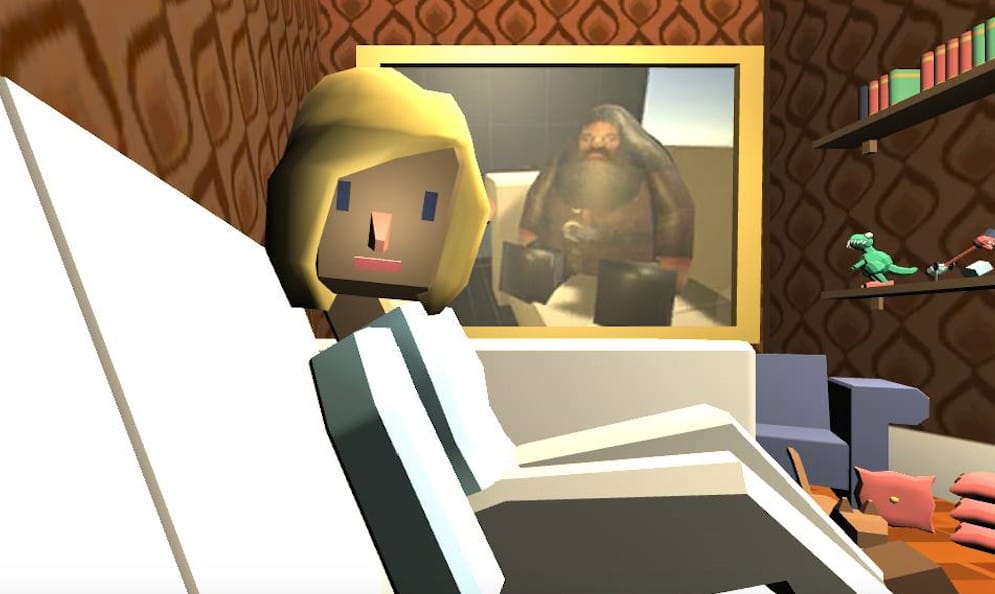
RepAir
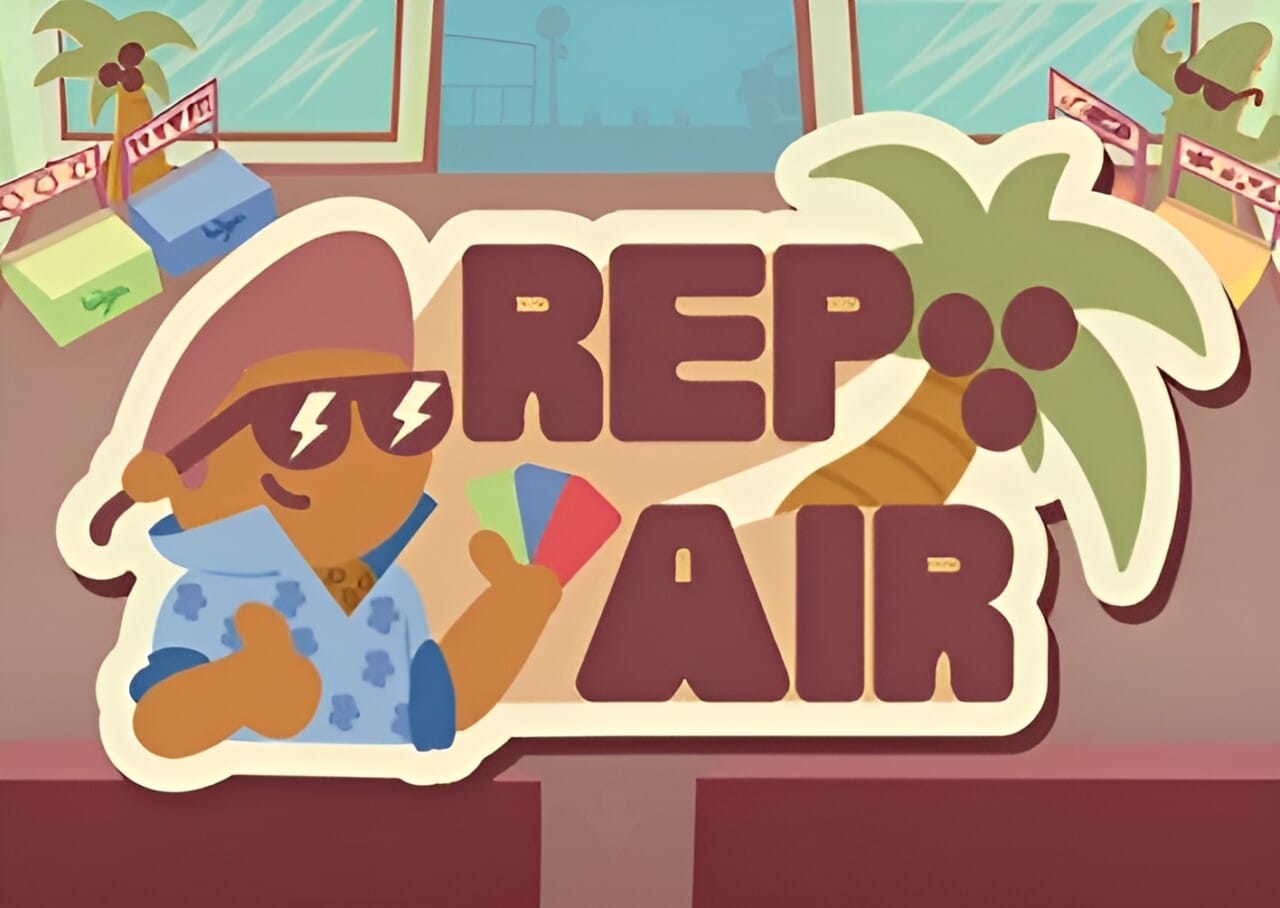
2020 was certainly a year. The disruption to my life and my daily routine caused by COVID meant that I often struggle to remember specific details of what happened throughout the year and this Global Game Jam is no exception. I just cannot remember anything about this game. I recognise the screenshots, but I cannot remember the theme*, the mechanics, or even making the thing.
(*As I was re-reading what I had written, I actually remember the theme being “Repair”, hence the name RepAir, which was HILARIOUS at 4am when it was conceived.)
I do remember that it was a slightly more stressful jam with the team’s responsibilities being split between needing to organise and run the jam itself whilst also working on our own entry. I had also moved down to Cambridge at that point so coming back up to Dundee for a weekend of jamming and then immediately returning home for a week of work was a lot more taxing on my body.
There’s surprisingly few images of the game on the Jam page, absolutely no social media posts made about it and furthermore, there isn’t even an executable file uploaded to the submission. Its weirdly eerie to think that we made this game, yet there appears so little proof of its existence.
Rereading the description of the game, players are required to approach customers in a queue at the airport and provide them with tickets that meet their needs for the best price they can afford whilst still making a profit. Not much I can really say about this one, other than I wish I had taken a few more pictures of the jam to prove to my future self that this wasn’t all just a dream.
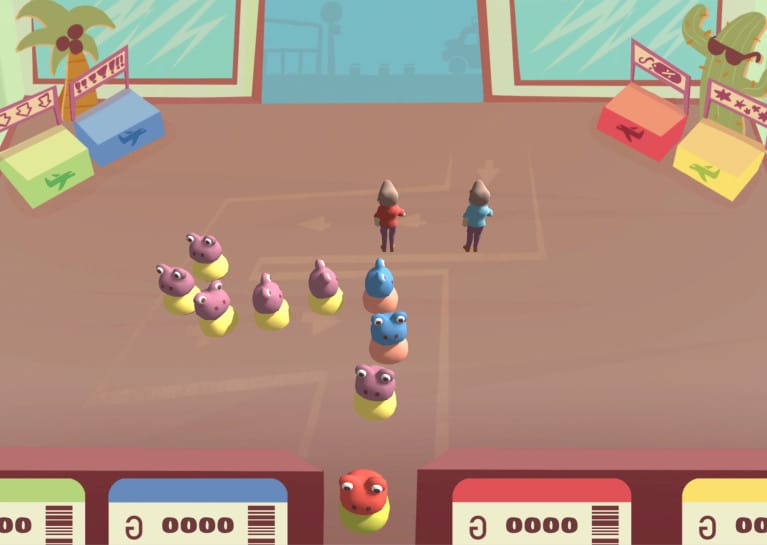
After 2020, I never returned to Abertay’s Global Gam Jam. It went digital for 2021 (and maybe 2022.. I can’t quite remember) and when it came back to being an in person event, I just never found a good opportunity to return. Also the team had greater responsibilities surrounding the organisation of the event, so it was getting harder to produce something complete each year.
Instead my focus shifted to Ludum Dare. A completely online game jam that takes place multiple times throughout the year. Themes are voted for by the public, and entries are played and rated by teams after the end of the jam. The more games you play and rate, the more exposure your game gets on the site. I’d attempt 5 Ludum Dare entries over the next 3 years, but would only actually submit 2 of them.
Baby On Board
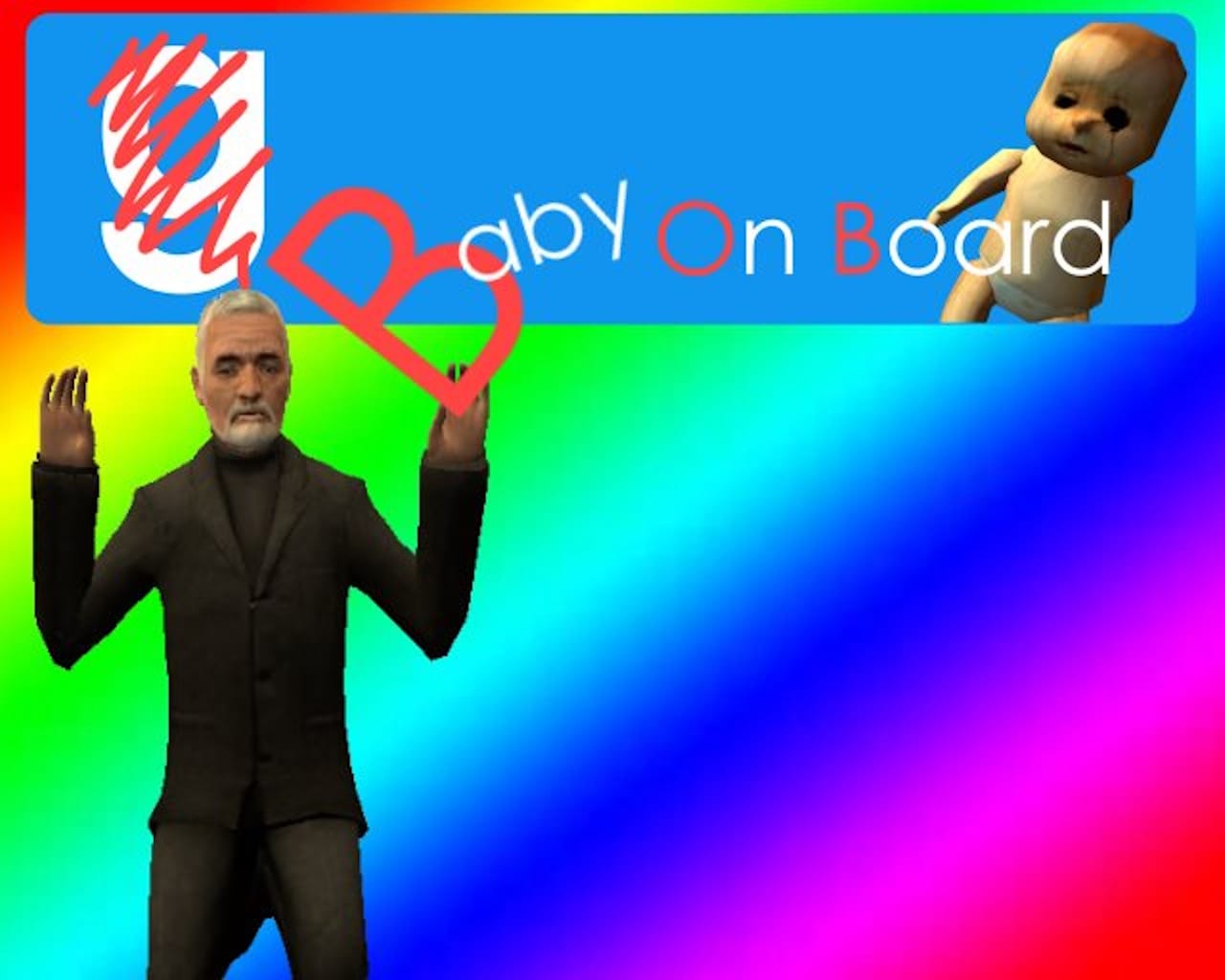
The first entry came about mid 2020 during the COVID lock down called Baby on Board built in Gmod. Ever since my time working at Junkfish, I had been fascinated by Gmod as a game making tool.
It was built in the Source engine with an extremely well documented LUA scripting tool layered on top. All the networking code came ready out of the box allowing a multiplayer game to be build with minimal networking knowledge required. I had previously learned how to work in Gmod, using it for a Junkfish prototype years ago. So figured it would be cool to return to it and make something for Ludum Dare.

I teamed up with another developer and we set about building a multiplayer game mode around the theme of “Keep It Alive”. A team of players were tasked with keeping a sinking submarine afloat, fixing holes in the ship, shooting HL2 zombies (it is Gmod after all) and ensuring the Admiral (who had been turned into a baby doll… for some reason) doesn’t drown.
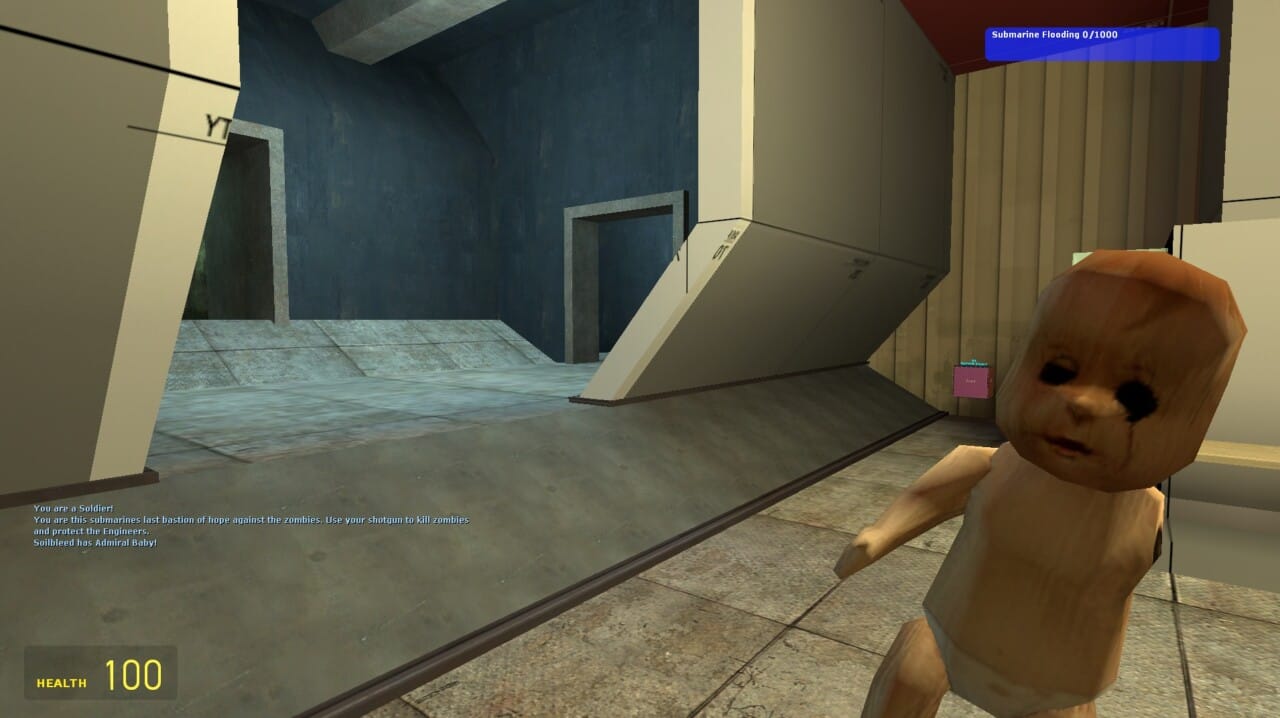
I’ll be honest with you, this thing was barely functional as a game and I’m actually surprised it received the minimum 20 required votes to get officially placed. The barriers of entry to this thing were insane; To actually play it, you needed to:
> Manually place files into different Steam folders
> Own a copy of Gmod
> Set up the game mode within Gmod
And to top it all off, you needed 3 other players to all do the same in order to play (all of which had to add the hosting player on Steam). We optimistically set up a Discord channel to try and organise gaming sessions but sadly (and understandably), no one joined. The Discord server doesn’t appear to exist any more which is a little sad. It amused me to think that someone might stumble across our entry years from now and click the link hoping to find a thriving community of “Baby On Board” players.
The game itself also wasn’t really complete, with a lot of the mechanics barely functioning as intended. This project definitely needed some more time in the oven and I can only assume the 24 people that gave it an average “fun” rating of 2.976 were doing so out of kindness or because of the novelty factor. If you, for some reason, feel compelled to play a half baked Gmod game mode, you can find all the necessary files for it on the Ludum Dare submission page.
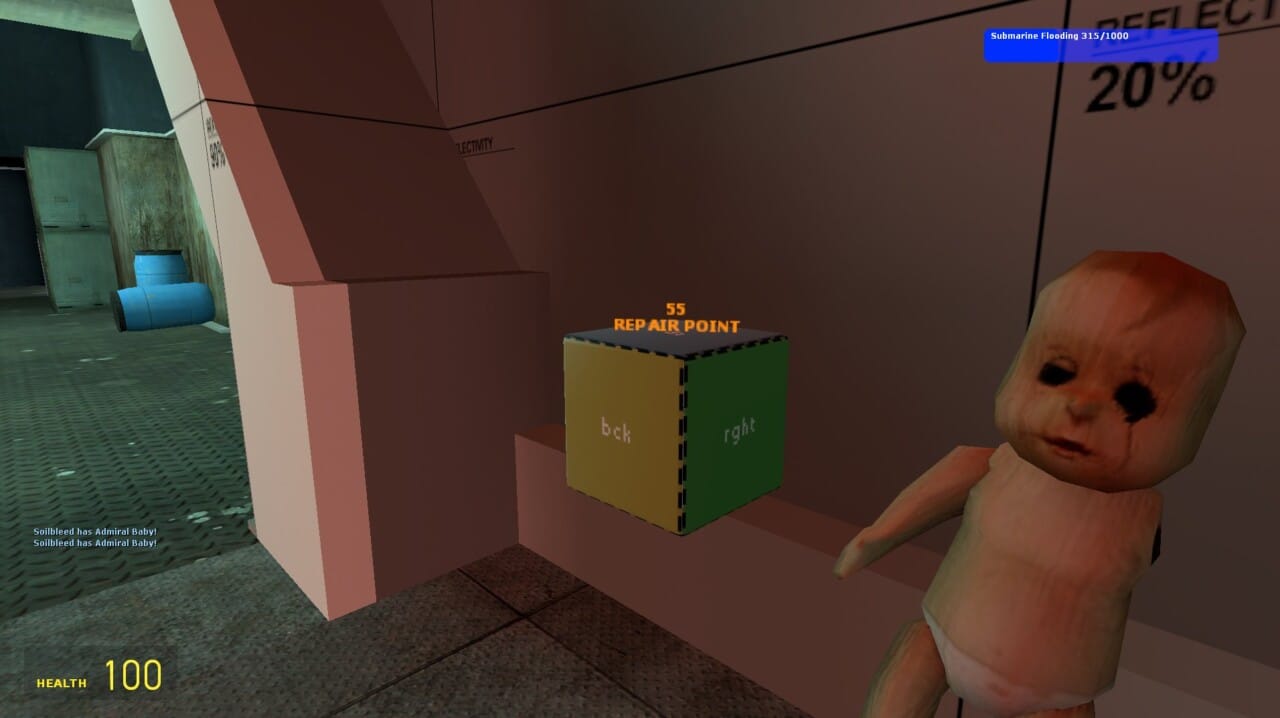
The Rubeus Cradle
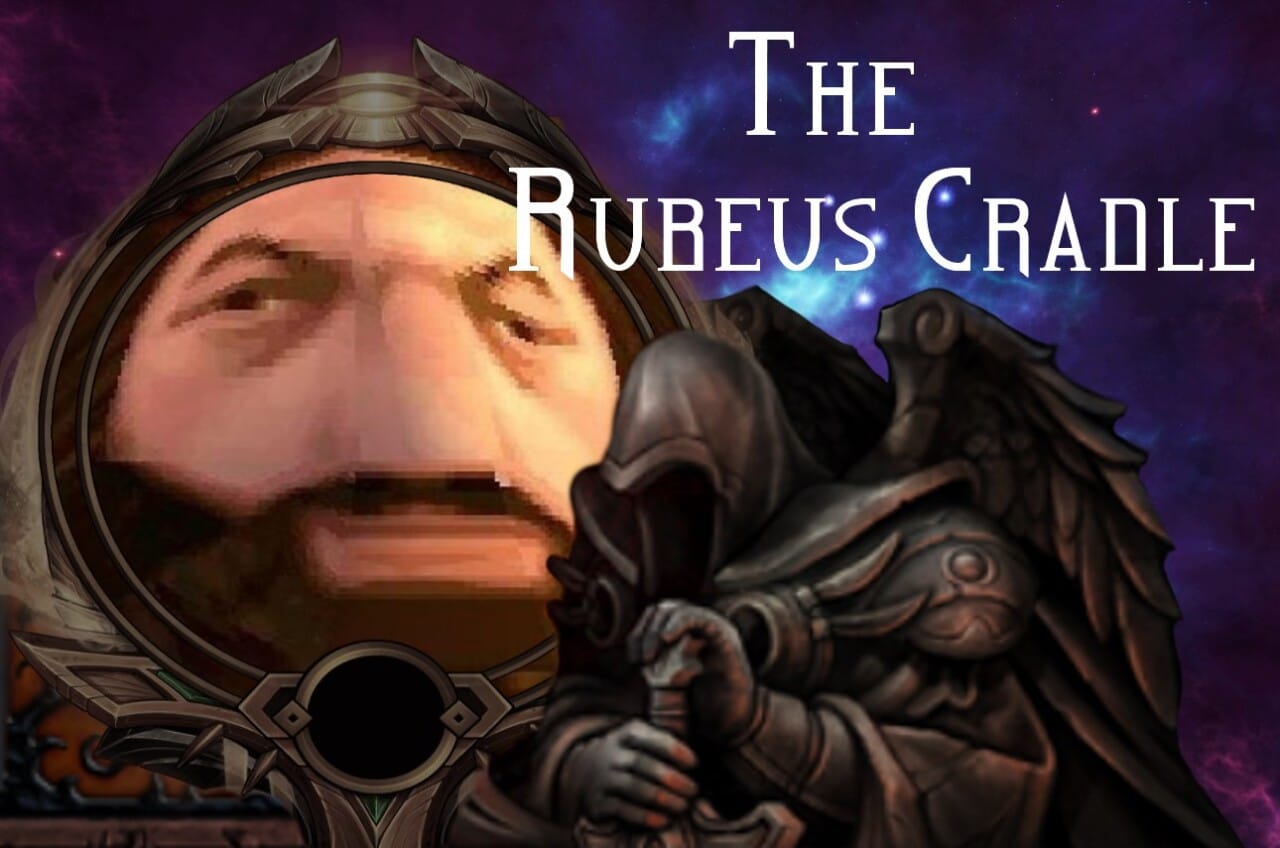
The Rubeus Cradle was the first game jam attempt done entirely on my own. Having polished up on my Blueprint knowledge prior to the weekend I was ready to dive head first into the shallow end.
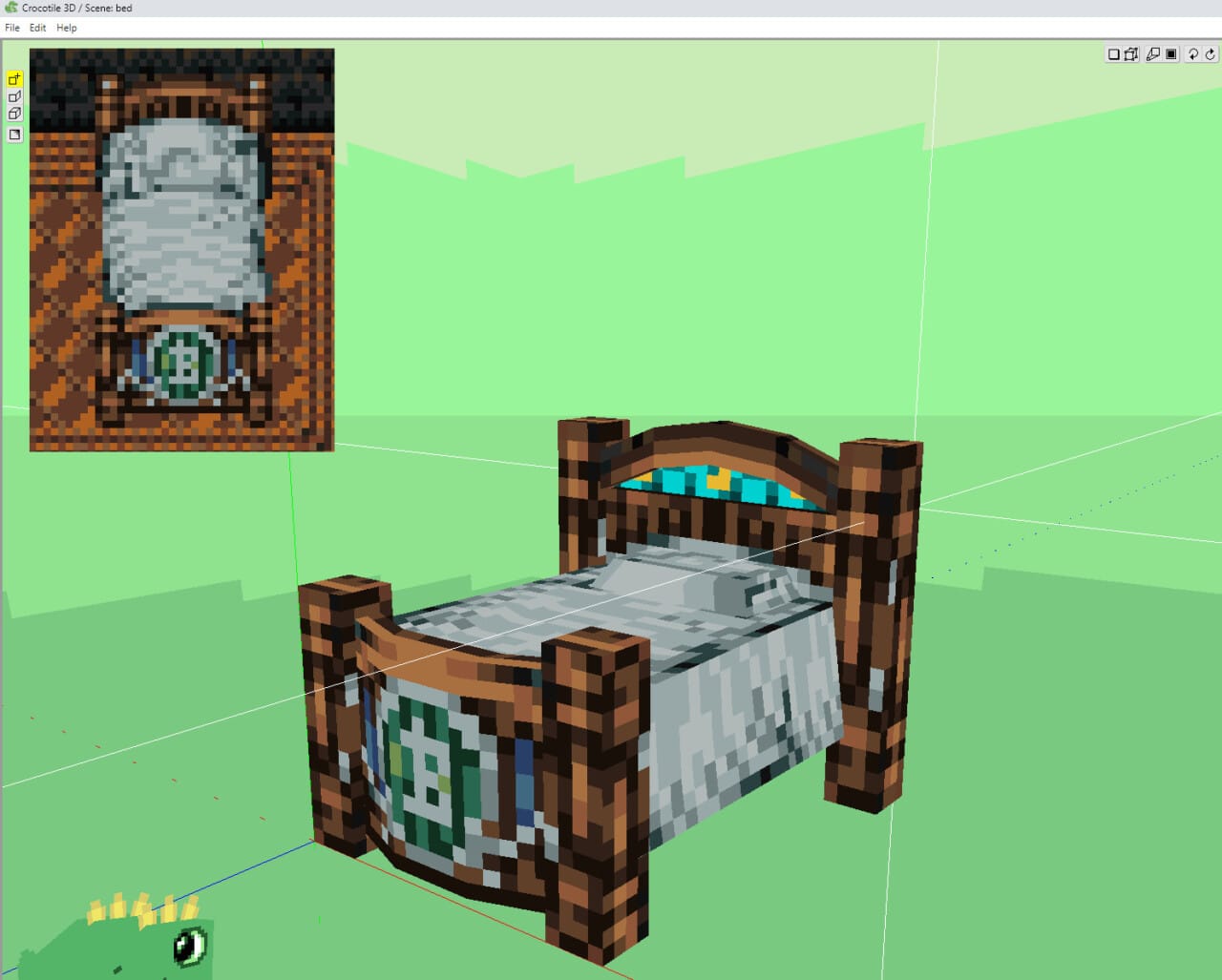
I had done little bit of prep work prior to the jam so I wasn’t going in too unprepared; There was a 3D modelling package call Crocotile3D, which took sprite sheets and gave you a relatively usable interface to build them into primitive 3D models. I had tested this out prior, and had surprisingly good results. PS1 Hagrid also made his return, but would ultimately be relegated to a 2D character portrait in the top right. The theme was announced at 11pm as “Unstable” and my mind initially went to an “unstable world”.
I remember spending an embarrassing long amount of time on the first evening just getting a bunch of random geometry to spawn into the level and then awkwardly float away from the player. The blueprints weren’t pretty, and the execution was laughably amateur, but I found myself incredibly proud at 6am, when it all suddenly began to work and I could put away the bottle of wine that had kept me company for the evening, and get some well deserved sleep.
In The Rubeus Cradle, the player took on the role of PS1 Hagrid as he jumped around this strange cosmic environment, collecting seeds, planting them into dirt patches, watering them and ultimately harvesting the berries once they were fully grown. Think of all the tedious resource gathering you do when farming in Minecraft but with none of the crafting that completes the loop and makes the whole process feel satisfying. There were 4 solid islands the player could jump to in order to gather the require tools; Water had to be filled from the well, the hoe needed to be collected to till the land etc. Only one tool could be carried at one time, so you had to keep track of where you left everything.
Between each of these 4 islands, there was 20 unstable platforms that would float and rotate aimless in the abyss. The player could use their wand to pull the platforms towards them and right-clicking on the mouse would lock them temporarily in place. This made the platforms walkable, so the player could navigate between the various islands. Grow and collect 5 berries without falling in the abyss (or losing any of your tools) and you win.
I had wanted to expand on the wand functionality to allow the player to rotate the floating platforms before locking them in place, but at the time of creation, quaternion rotation wasn’t viable in Unreal blueprints, and would require some C++ to get working. Given my only C++ experience was making an ASCII game of minesweeper back in 2010, I did think that it was perhaps a little optimistic of me.
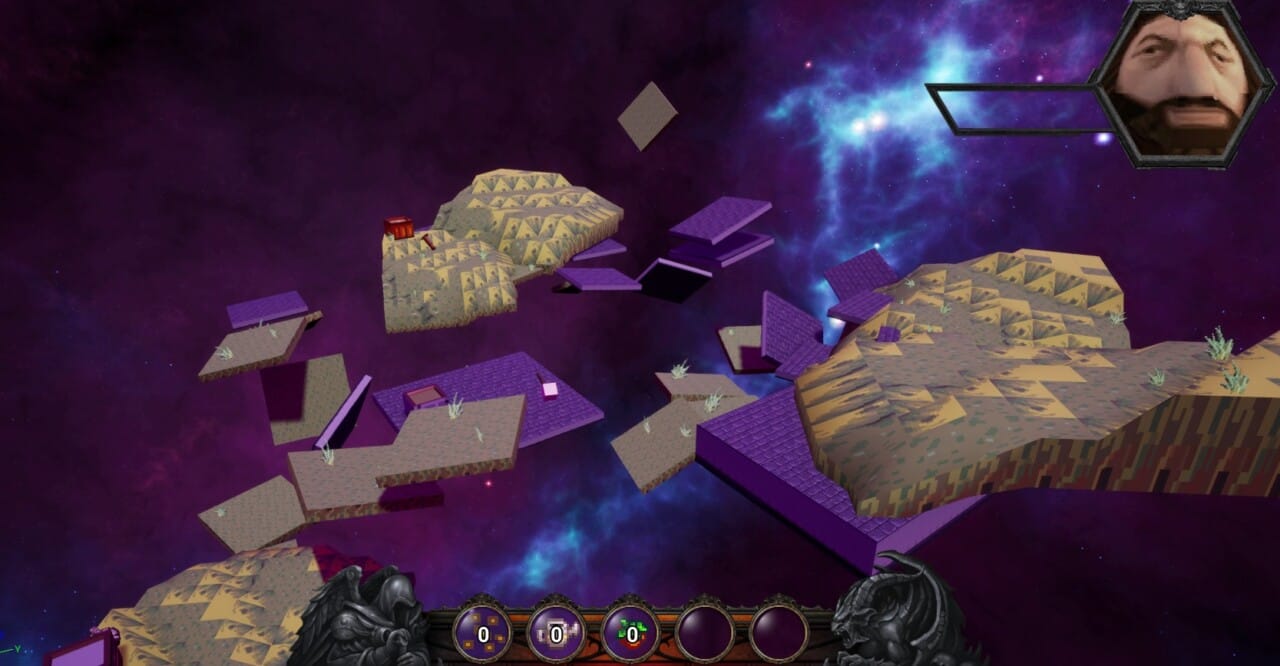
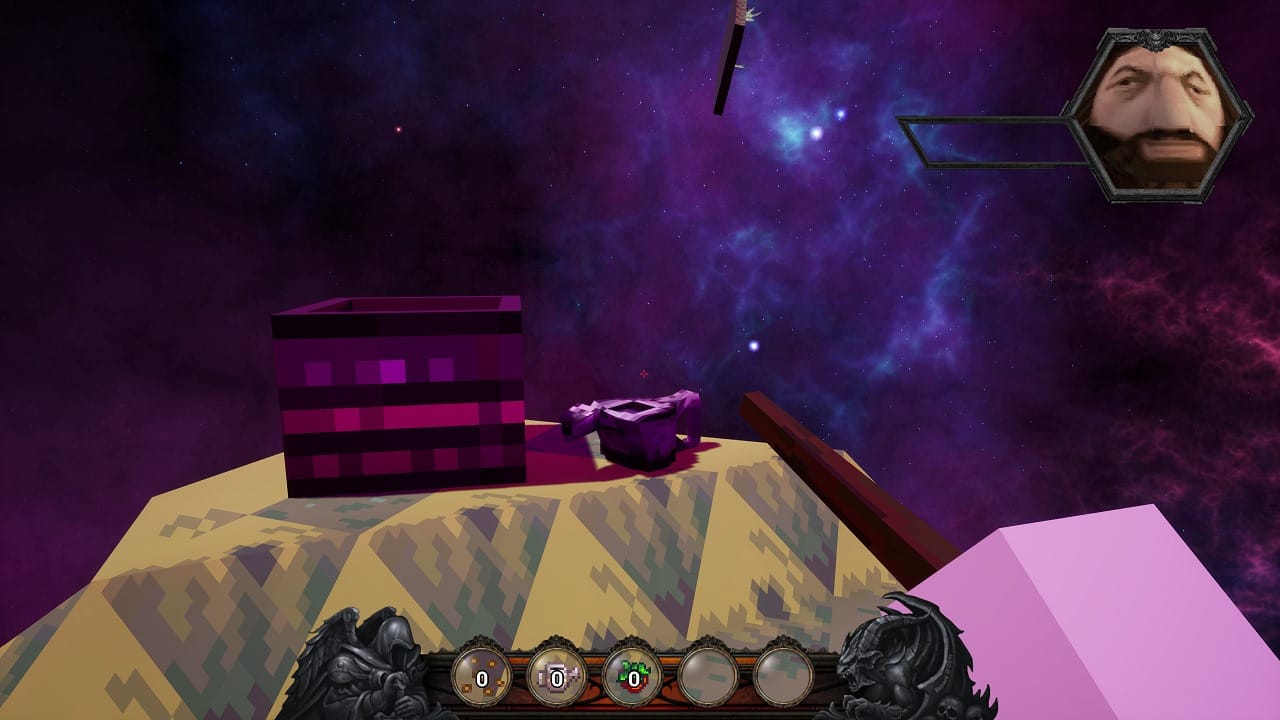
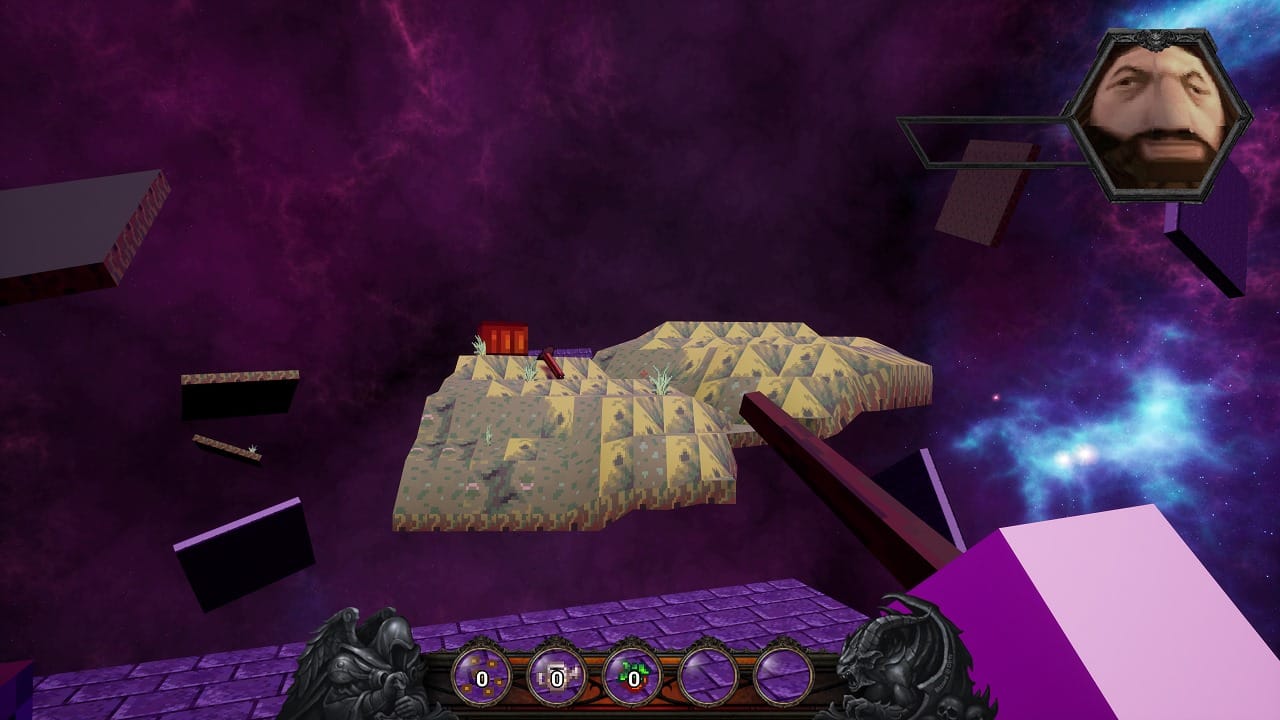
The game wasn’t flashy, but it worked and was completed (somewhat) within the time frame of Ludum Dare, so I was happy with the result. What I find wild however, was that less people played and rated this game than Baby On Board, despite all the faff you had to go through in its set up. There’s a Dropbox link available on the Ludum Dare submissions page if you want to give it a ago.
And there we have it. This was just a brief look into the game jams I have participated in over the last decade. There were others that I haven’t written about (namely because they hardly qualify as “game jam entries”). Most are half baked concepts that I thought would be funny, like the “Anvil of Sodom” a Hagrid themed JRPG made in RPG maker VX that failed due my lack of Ruby knowledge. Or “Carry On Delivering” a stand alone game built on top of Half Life 1, that was based on the Carry On Series (Where that concept came from, I have no idea).
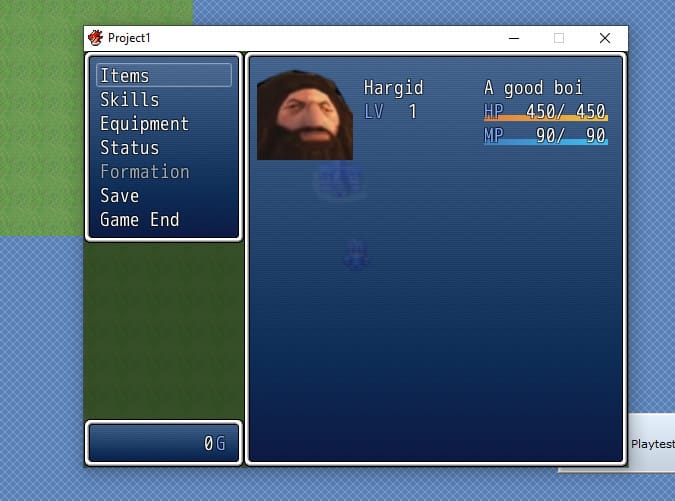
Or the real time digital card game that had a tick rate dictating when the player would draw a card or when an effect would trigger (that one actually had a good design and its a real shame it never materialised as I really think the idea has some fire behind it – though I probably should strip the Hagrid theme out first)
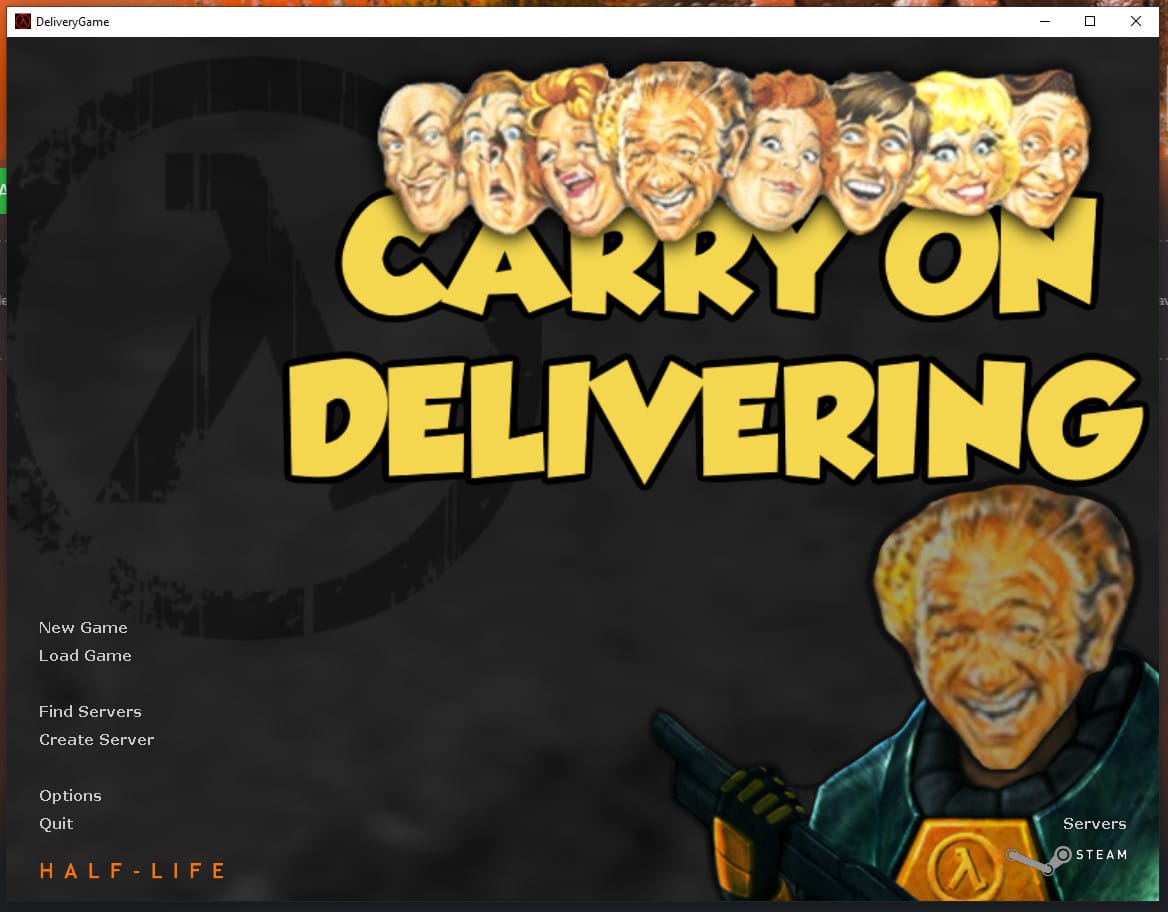

Ultimately, game jams are incredibly fun, and I highly recommend young and enthusiastic developers give them a try if they haven’t. You don’t have to make anything good (I’m evidence of that, and look how my career turned out!), you just need to make something you can look back on in 10 years, feel immensely proud of and then ultimately write a blog post about.


